
The New Equation

Executive leadership hub - What’s important to the C-suite?

Tech Effect

Shared success benefits
Loading Results
No Match Found

HR transformation case study
Hyatt’s talent strategy transformation
A talent for caring: How Hyatt is activating its purpose and transforming culture to unlock growth for colleagues and the business
Client: Hyatt Hotels Corporation Our Role: Help design and implement a Talent Philosophy and an associated Playbook, a resource to allow leaders to move the business forward through consistent, focused, yet flexible Talent management. Industry: Hospitality and leisure Services: Workforce Transformation , People and organization
Bringing purpose to life on a global scale
Hyatt had rallied around a unifying purpose— we care for people so they can be their best. Hyatt’s purpose resonated instantly within the organization because “care” is at the core of Hyatt’s DNA. While “care” can be limited to only a feeling, Hyatt sees it as more: It’s an action taken that starts with listening and empathy, resulting in caring action that leads to people being their best. With this in mind, Hyatt began to take a fresh look at how its colleagues could be their best. In doing so, Hyatt realized that managers and their teams needed a clearer framework for understanding their roles and accountabilities. They needed a simpler approach to be more consistent and confident in making people decisions (how they hire, develop, grow and reward colleagues) and how they create a culture where colleagues can be their best selves every day at work through enhanced focus on leading inclusively and creating the right environment for colleagues’ wellbeing.
The starting point? Listening and understanding the root issues by conducting extensive research with colleagues around the world to discover the leadership behaviors that most successfully drive business outcomes. With more than 120,000 colleagues working in more than 875 hotels in over 60 countries on six continents, it was also time to optimize its HR processes, tools and systems; designing around the needs of the business and removing inconsistencies and fragmentation in an effort to improve operational effectiveness and increase colleague and job candidate satisfaction. Hyatt’s HR leaders aspired to create a superior Talent experience to bring purpose to life for every colleague and potential colleagues—and, by extension, for every guest and customer—in its hotels worldwide.
“One of the most rewarding aspects of our work with Hyatt has been participating in the evolution of a significant HR transformation that impacts everyone in the organization on some level, and ultimately, Hyatt guests worldwide. We were inspired by Hyatt’s commitment to including the perspectives of its people in every region.” Jon Glick, Principal, PwC
Design-thinking + analytics + change management = a vision forward
When Christy Sinnott, Hyatt’s Talent Management Leader, first met PwC’s account and HR consulting team and began discussions about their shared passion for purpose-focused organizations, data driven decisions, and culture, none could have known that these discussions would evolve into a multi-year effort to transform Hyatt’s talent strategy. The HR transformation journey has engaged PwC professionals with subject matter experience in every aspect of HR program design and management. Activating Hyatt’s leadership development model through talent development training targeted at Hyatt's top and rising leaders was the first step. With a new set of expectations for leaders in place, Hyatt asked PwC to help design and implement a Talent Philosophy and an associated Playbook, a resource to allow leaders to move the business forward through consistent, focused, yet flexible Talent management. A current state assessment helped identify challenges and gaps; a blueprint for success helped to facilitate alignment of business and people strategies; and plans for the future state supported development of a clear and compelling Talent Philosophy. That Philosophy—a series of six commitments to its colleagues—is grounded in Hyatt’s purpose and values and designed to guide the relationship between leaders and their teams. The Playbook maps Hyatt’s People strategies to specific systems, processes and procedures to support transparent and consistent standards across the organization.
“PwC helped us understand how applying the lens of purpose could transform and focus HR structures and processes to create world-class leaders and, subsequently, to re-imagine the entire talent experience. In a global organization of our size and complexity, this has been an amazing collaboration among so many people, including our colleagues around the world.” Christy Sinnott, Senior Vice President of Talent Management, Hyatt
Re-imagine the talent experience to help Hyatt and their colleagues map a route to growth
With the Playbook underway, Hyatt’s HR leaders realized that while they had done a lot to evolve their strategy and systems around Talent, there was much more they wanted to do. They invited PwC to help them re-imagine the entire talent experience, with the goal of improving internal processes on a global scale to support strategic workforce planning and permit colleagues to pursue their own growth as the organization continues to grow. PwC teams helped Hyatt identify pain points, create diverse personas and stories to envision colleagues’ overall experience from pre-hire through promotion, and map opportunities to promote a clear understanding of, and commitment to, brand and purpose. Along the way of this extended journey, the PwC team helped support Hyatt with a multi-year colleague listening program; create a roadmap for the implementation of digital platforms to support efficient HR processes across the organization; consider strategies to advance Hyatt’s commitment to Inclusion and Diversity; and develop specific tools and methods to measure success and business outcomes.
“Inclusion is a core organizational capability at Hyatt that will continue to drive many aspects of our business, including Talent. Working with PwC to further our inclusion goals has been extremely helpful and timely.” Malaika Myers, Chief Human Resource Officer, Hyatt
Creating an ideal future-state experience
Demographics shift. The business climate changes. Guest expectations evolve. One constant for Hyatt is its culture of care which is at the heart of its business strategy. Scaling an enhanced talent experience worldwide will allow Hyatt to enable colleagues to be their best and achieve business outcomes as Hyatt continues on its growth trajectory.
The team is now actively working to advance care for colleagues in many ways:
- A Global Leadership Performance Model that helps drive the behaviors that drive results creating a high-performing culture that can adapt to the changing business climate.
- A streamlined and improved candidate experience , including a redesigned applicant process, new on-boarding tools and resources, and an evolving new hire orientation program, that Hyatt anticipates to reduce source-to-hire time and increase retention .
- Diversity Business Resource Groups and the Global Inclusion & Diversity Council are helping to develop a robust pipeline of diverse leaders for the future to execute current and future business strategy, increase retention, differentiate Hyatt as an employer of choice and drive greater personalization of the guest experience.
- A New People Leader Curriculum provides new managers with a Talent Playbook that creates consistency across the organization, empowers leaders of people to make the right decisions for their teams , and brings clarity to the supporting systems and processes.
At the center of the work is an intense focus on:
- Eliminating key pain points for colleagues so we bring the right roles to the right people at the right time . Transparency around and opportunities for career growth and development, performance measurement and rewards.
- Simplifying HR programs and processes contributes to a shared understanding of responsibility for leading talent. HR managers work closely with people managers to help them proactively build and develop their teams, with flexible customization to support distinct functions, hotels and regions.
- Expanding talent and recruitment outreach to institutions in diverse communities to drive an expanded, more diverse candidate pool, and in some cases identify business development opportunities .
“Participating in CEO Action for Diversity and Inclusion, alongside PwC, has been a valuable part of Hyatt’s inclusion journey, particularly the collective effort of organizations to look at bias and to share challenges and best practices. Creating a sense of belonging and community is especially important in the hospitality industry for both our colleagues and our guests.” Tyronne Stoudemire, Vice President of Inclusion and Diversity, Hyatt
Explore PwC's case study library
{{filterContent.facetedTitle}}
{{item.publishDate}}
{{item.title}}
{{item.text}}
Let us be part of your success story
Reach out to start a conversation

Principal, PwC US

Shebani Patel
Partner, PwC US

Ann Johnston

Angela Lester

Thank you for your interest in PwC
We have received your information. Should you need to refer back to this submission in the future, please use reference number "refID" .
Required fields are marked with an asterisk( * )
Please correct the errors and send your information again.
By submitting your email address, you acknowledge that you have read the Privacy Statement and that you consent to our processing data in accordance with the Privacy Statement (including international transfers). If you change your mind at any time about wishing to receive the information from us, you can send us an email message using the Contact Us page.
© 2017 - 2024 PwC. All rights reserved. PwC refers to the PwC network and/or one or more of its member firms, each of which is a separate legal entity. Please see www.pwc.com/structure for further details.
- Data Privacy Framework
- Cookie info
- Terms and conditions
- Site provider
- Your Privacy Choices

Access to 13 certificate programs, courses and all future releases
Personal Coaching and Career Guidance
Community and live events
Resource and template library

- Develop Your Talent Acquisition Strategy...
Develop Your Talent Acquisition Strategy With 6 Practical Examples

What is a talent acquisition strategy?

How to develop a talent acquisition strategy
1. workforce planning, 2. job description and person specification, 3. attracting talent, build talent pipelines, employer branding, selection process.
- Application
- Screening & pre-selection
- References and background check
- Job offer & contract
Hiring and onboarding

Talent acquisition strategy best practices
1. using technology in talent acquisition, 2. implementing data-driven decision making, 3. retaining high-performing staff, 4. building a positive candidate experience, 6 talent acquisition strategy examples , 1. ben & jerry’s: employer branding, 2. pure: employee referrals, 3. ibm: talent pipelining, 4. spreetail: candidate experience, 5. synchrony financial: data-driven recruitment, 6. talking rain: deib initiatives, case study: unilever’s successful talent acquisition strategy, the challenge, an overview of the strategy , top learnings for hr.
- Screen for potential as well as experience
- Leverage tools and technology where possible
- Survey candidates to improve your candidate experience
- Provide candidates with plenty of feedback (even if they are unsuccessful)
- Use data to make evidence-based decisions and improve your TA strategies
- Make diversity, equity, and inclusion a priority in your hiring practices.
Key takeaways
- What is a talent acquisition strategy: A talent acquisition strategy helps businesses to source, attract and retain top candidates who thrive in the company culture and work to meet its long-term goals.
- How to develop one: Strategic workforce planning, clear job descriptions, talent pipelines, strong employer branding, and a solid selection, hiring, and onboarding process can all help you create an effective talent acquisition strategy.
- How HR can optimize their talent acquisition strategy: Leverage technology, implement data-driven decisions, try to retain your top talent, and deliver a winning candidate experience.
Weekly update
Stay up-to-date with the latest news, trends, and resources in HR

Related articles

What Is Poaching Employees? The Legalities & How To Deal With Employee Poaching

Interview Notes: 9 Reasons To Take & Best Practices To Follow (+Free Templates)

25 Employee Onboarding Statistics & Trends You Must Know in 2024
New articles.

Using AI in HR: The Impact, Hurdles & Actions HR Leaders Must Take

Generative AI in HR: Examples & How To Successfully Start Using AI
Subscribe to our weekly newsletter, are you ready for the future of hr.
Learn modern and relevant HR skills, online

Strategic talent management for the post-pandemic world

Supports private, public, and social sector clients through expertise in talent management, organizational design, and workforce development
November 9, 2020 In the COVID-19 era, chief HR officers (CHROs) are playing a central role in how companies reimagine personnel practices to build organizational resilience and drive value. There is no shortage of new responsibilities, from fostering connectivity early in the pandemic to developing and implementing plans for the return to offices.
Additionally, the COVID-19 crisis is now accelerating preexisting talent management trends in the CHRO playbook. By acting in five such areas, CHROs can craft a strong and durable talent strategy for the post-pandemic world.
Finding and hiring the right people. Efficient and effective hiring continue to be important.
For example, organizations are re-thinking the role of on-campus interviews in the hiring process, given the success they’ve experienced with remote interview methods. And since temporary labor is poised for a faster recovery, organizations should be ready to use that flexible labor in additional ways.
CHROs should take a fresh look at tools that make it easier to connect people to employment, based on a deeper understanding of their skills and how those match with available jobs.
Learning and growing. CHROs must consider the effects of large workforce transitions accelerated by the COVID-19 crisis and the key role that reskilling plays in helping close talent gaps .
The agenda for post-pandemic learning and development extends beyond reskilling to three categories of cost-effective training:
• Broad-based digital training in essential skills • Focused upskilling rooted in changing work • Leadership development
Managing and rewarding performance. The crisis is accelerating shifts in how organizations manage and reward performance. It has dramatically affected goals and performance plans, while making remote workers further reliant on performance management for feedback.
To encourage effective performance management now and beyond, CHROs should:
• Transparently link employee goals to business priorities and maintain a strong element of flexibility. • Invest in managers’ coaching skills. • Keep ratings for the very highest—and lowest—performers but also celebrate the broad range of good performance.
Tailoring the employee experience. The blurring line between work and life while working remotely means that employee experience is even more critical.
CHROs must help establish norms of working that foster engagement and inclusion for all employees. The solution will be based on talent needed, which roles are most important, how much collaboration is necessary for excellence, and where offices are located today, among other factors.
HR departments should also consider the range of analytics tools they can use to understand and promote connectivity and engagement, from social network analyses to listening tools such as mobile text platforms.
Optimizing workforce planning and strategy. Given shifts in how value is created in the post-COVID-19 world, the talent base required may need to shift as well. Workforce planning, strategy, and change is the HR spending category that McKinsey survey respondents cite as most likely to increase over the next 12 months.
Components of workforce planning and strategy include:
• Critical roles. Research suggests that a small subset of roles is disproportionately important to delivering a business-value agenda. For each role, identify core jobs to be done, qualities needed of leaders, and whether the role is set up for success. • Skill pools. Organizations should look at their major skill pools to understand the skills required for the future and whether they are long or short on the required talent. • Talent systems. CHROs now have more workforce-planning tools to help them match people to jobs. Such tools will become increasingly critical for CHROs to meet the challenges ahead.
For more information, please read our article, “ HR says talent is crucial for performance—and the pandemic proves it .”
Career Exchange is a COVID-19 response initiative offered at no cost to companies hiring, furloughing, or laying off individuals. It is a digital talent marketplace that aims to address the mismatch of labor supply and demand, helping organizations and individuals. McKinsey & Company supports the platform as part of our commitment to safeguarding livelihoods. Learn more or visit the Career Exchange website to sign up.
Learn more about our People & Organizational Performance Practice
- CEO & Board Services
- Talent Strategy
- Talent Assessment
- Leadership Development
- Coaching Services
- Succession Management
- Private Equity Services
- Client Case Studies
- Case Studies
- Pearls of Leadership Wisdom
- White Papers
- CEO Message
- Mission and Vision
- Leadership Team
- DEI Commitment
- Community Involvement
- Careers at MDA
- Assessment Center
- Minneapolis Office Directions
- Phoenix Office Directions
- Transportation & Hotel Accommodations

Talent Strategy Case Studies
Learn how otter tail and polaris drive business transformation.
MDA supports organizations with business transformation by aligning their business and talent strategy and leveraging best practice solutions. Read this Twin Cities Business article to learn how we supported Otter Tail Corporation and Polaris Inc. with this important work, leading to extraordinary growth and success for both organizations. Read the article here.
Polaris Case Study: The Predictive Potential of Assessment
Joe Wollan, Director of Talent Acquisition, Polaris, describes how talent assessment plays a critical role in the success of their business strategy. You’ll walk away with new ideas to strengthen your organization’s assessment strategy, scale assessments cost effectively at lower levels, and leverage the latest in talent analytics.
Case Study – Polaris Case Study: The Predictive Potential of Assessment (351 KB)
C.H. Robinson: Leveraging Assessment to Create a World-Class Leadership Culture
Leading organizations leverage assessment to create a world-class leadership culture. Here C.H. Robinson explains how they created a global leadership strategy designed to identify, develop and retain high-potential employees; create a strong leadership bench; and develop the next generation of diverse leaders who empower teams to deliver exceptional results.
Case Study – C.H. Robinson: Leveraging Assessment to Create a World-Class Leadership Culture (158 KB)
How MDA Leadership helped Sleep Number identify and develop the leaders responsible for its record-breaking results
While several factors have contributed to Sleep Number’s success, the company’s leadership credits in particular an ongoing, decade-long effort to unite employees behind a vision to improve peoples’ lives through personalized—and better—sleep experiences. To get there, Sleep Number, with MDA’s help, needed to identify and develop leaders capable of achieving transformative cultural and business results. Learn how they did it.
Predicting Success: How ARS Identified High-Performing General Managers to Drive Business Growth
ARS approached MDA Leadership to improve performance consistency and business growth across its geographic footprint based on the leadership capabilities and impact of its General Managers (GMs). By smartly and effectively identifying those most likely (and least likely) to succeed as GMs, ARS is now much better prepared to achieve predictable business success and enjoy a higher likelihood of long-term, sustainable growth. Learn how they did it.
Case Study – Predicting Success: How ARS Identified High-Performing General Managers to Drive Business Growth (773 KB)
Leading Organizational Transformation: The View from the Top
As companies of all types and sizes are battered by the waves of changing technology, customer demands, and threats from potential disruptors, how can executives successfully transform their organizations? Organizational transformation can be daunting, but readily attainable, through strong leadership and solid change management practices, according to a panel of highly respected CEOs. Learn their seven organizational and personal success factors here.
Case Study – Leading Organizational Transformation: The View from the Top (2063 KB)
Assessment Becomes Critical Component in High-Growth Organizations
With companies facing a record pace of leader retirements and talent shortages, they need sophisticated assessment-driven strategies to identify top talent and accelerate leader development. Learn how Ecolab and Cardiovascular Systems, Inc. are leveraging assessment to accomplish their ambitious business goals.
Case Study – Assessment Becomes Critical Component in High-Growth Organizations (1603 KB)

Let’s begin a conversation.
At MDA Leadership, we know there are no one-size-fits-all solutions for every organization. We take the time to get to know your business and your leadership needs and recommend a range of options that are the best fit for your growth goals. Let's see how MDA Leadership can optimize your Talent Strategy for the Long Run®.
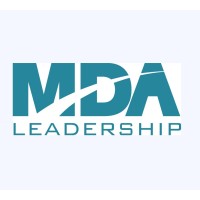
- Privacy Overview
- Strictly Necessary Cookies
This website uses cookies so that we can provide you with the best user experience possible. Cookie information is stored in your browser and performs functions such as recognising you when you return to our website and helping our team to understand which sections of the website you find most interesting and useful.
Strictly Necessary Cookie should be enabled at all times so that we can save your preferences for cookie settings.
If you disable this cookie, we will not be able to save your preferences. This means that every time you visit this website you will need to enable or disable cookies again.
Talent Development in 2024: Strategy Examples + Case Studies
by Emre Ok October 27, 2023, 10:44 am updated March 27, 2024, 11:23 am 561 Views
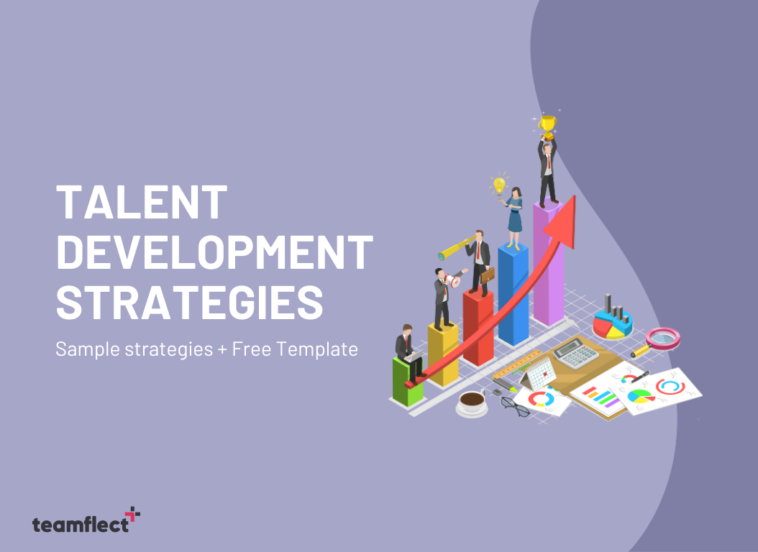
Talent development is one of the hardest practices to pin down in the world of performance management. There is no exact time for talent development to start and there is no specific end date for it as well.
Talent development begins from the moment an employee enters your onboarding program , all the way until they complete their exit interviews .
The question of what talent development for your organization depends heavily on the relationship you have with your employees, your organizational culture, your day-to-day practices, and a billion other small but important factors.
So in order to provide you with the best possible talent development guide, this article will include the following:
- Talent development best practices.
- Examples of talent development strategies.
- Three real-world cases of how Google, LinkedIn, and Walmart develop their talent.
- Common talent development mistakes to avoid.
- A free talent development template for you to download.
- Talent development tools.
But before we get to all of those, let’s cover our bases and do a bit of housekeeping.
Table of Contents
Integrate Development Plans into Microsoft Teams
While we already have a free employee career development plan template ready for you to download if you just scroll down, if you’re a Microsoft Teams user, then you won’t really need it! All you need to do is try the best performance management solution for Microsoft Teams to start creating customizable individual development plans and templates without leaving the comfort of your favorite communication platform!

What is talent development?
Talent development is an organizational strategy that proactively advances employee engagement, learning, and productivity by building on existing strengths rather than trying to fix weaknesses.
Talent development can be used to help someone reach their highest potential and is designed to help employees learn new skills and improve the overall performance of their organizations.
Talent development strategies help individuals to achieve their goals, while also improving the organization’s performance.
It can be used in a variety of ways: to improve employee engagement , productivity, and overall organizational performance; to develop or enhance skills within an employee’s current role; to prepare an individual for a new position or promotion within the organization.
Why is talent development important?
Now that we’ve answered the “What?” let’s take a brief dive into the “Why?”. While the question itself, when read out loud, may sound a bit redundant, here is why you should be making the development of talent in your organization a priority and invest in a strong talent development program.
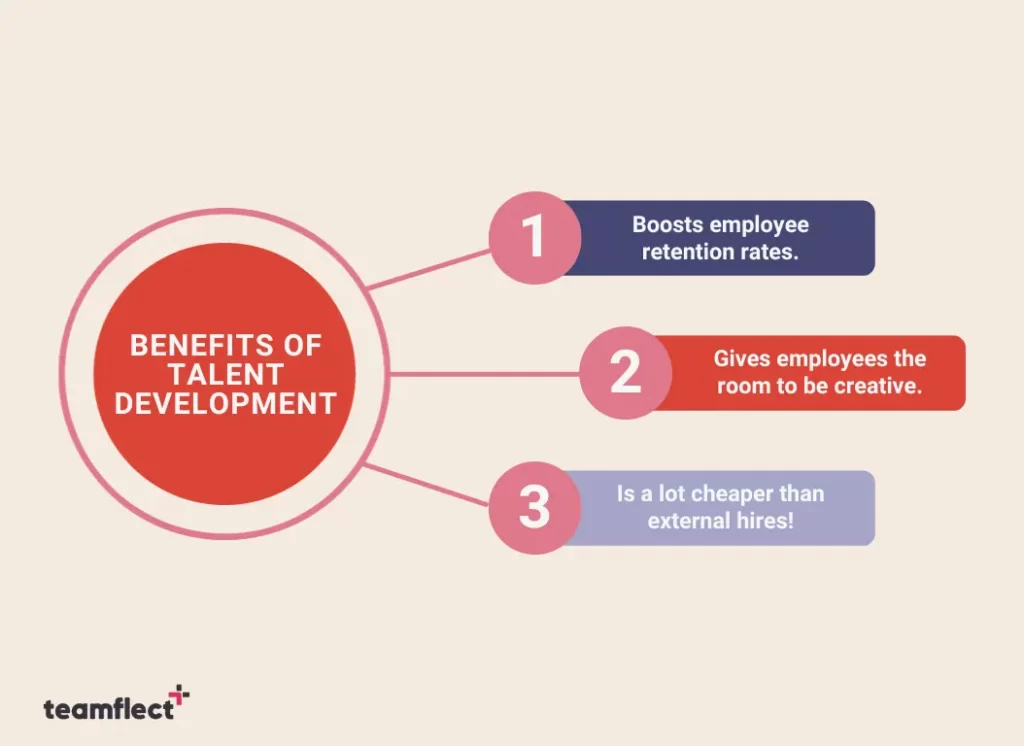
1. Stop the revolving door! Boost retention rates!
A huge chunk of the importance of talent development stems from the fact that it increases employee retention rates and helps to create a better workplace culture by encouraging learning.
Employees who feel they are continually growing and improving their skill sets will be more likely to stay with an employer long-term and contribute more effectively during their tenure with the organization.
After all, a paycheck shouldn’t be the only avenue through which you invest in your employees. Providing them with the right opportunities for growth is one of the best ways to make sure they remain invested in your organization.
2. Build a strong, passionate team around you!
These are your people we are talking about! Them having upgraded skillsets and reinvigorated confidence is only going to benefit your organization.
A study by LinkedIn found that companies with strong learning cultures are 58% more likely to meet their business goals and 17% more likely to be market leaders.
If there is anyone who will benefit from talent development programs more than the talent themselves, it is the organization they are a part of.
3. Upskilling is cheaper than recruiting!
You may or may not want to refer to our article on “ Quiet Hiring ” on this one! Training an existing employee, someone who knows your organization is by far the cheaper option when it comes to building a team.
A study by Matthew Bidwell from the University of Pennsylvania clearly states that:
External hires cost 18% more than internal hires. Matthew Bidwell in “Paying More to Get Less: The Effects of External Hiring versus Internal Mobility”
If you think creating an individual development plan may be too much work, trust as when we say that implementing an effective onboarding process for new hires is twice as hard and costly!
What are the core components of a talent development program?
So let’s start building that talent development program together. While we will get to some talent development strategy examples in a few scrolls, let’s first discuss some of the core components of a talent development process in the workplace.
Having a strong foundation is crucial for the success of a talent development strategy, which is a crucial HR competency or any other HR initiative for that matter. So let’s just dive in:
1. Targeted Learning and Development Activities:
The heart of any talent development program is the learning and development activities. These activities can include workshops, courses, seminars, on-the-job training, employee mentorship , coaching, and more. Ensure that these activities align with your defined objectives and cater to the diverse needs of your workforce.
2. Customization and Personalization:
Recognize that not all employees have the same learning needs or preferences. Tailor your development activities to cater to individual and team requirements. Personalization allows employees to engage with content that is most relevant to their roles and career aspirations.
3. Assessment and Feedback Mechanisms:
Implement a system for assessing and providing feedback on employee progress. Regular assessments help in tracking development, identifying areas for improvement, and making necessary adjustments to the program. Feedback is a vital component of growth and motivation.
That being said for organizations working remotely or with high employee counts, feedback and assessment can become a bit of a challenge.
If your organization uses Microsoft Teams on a regular basis, however, then the best option for you would be:
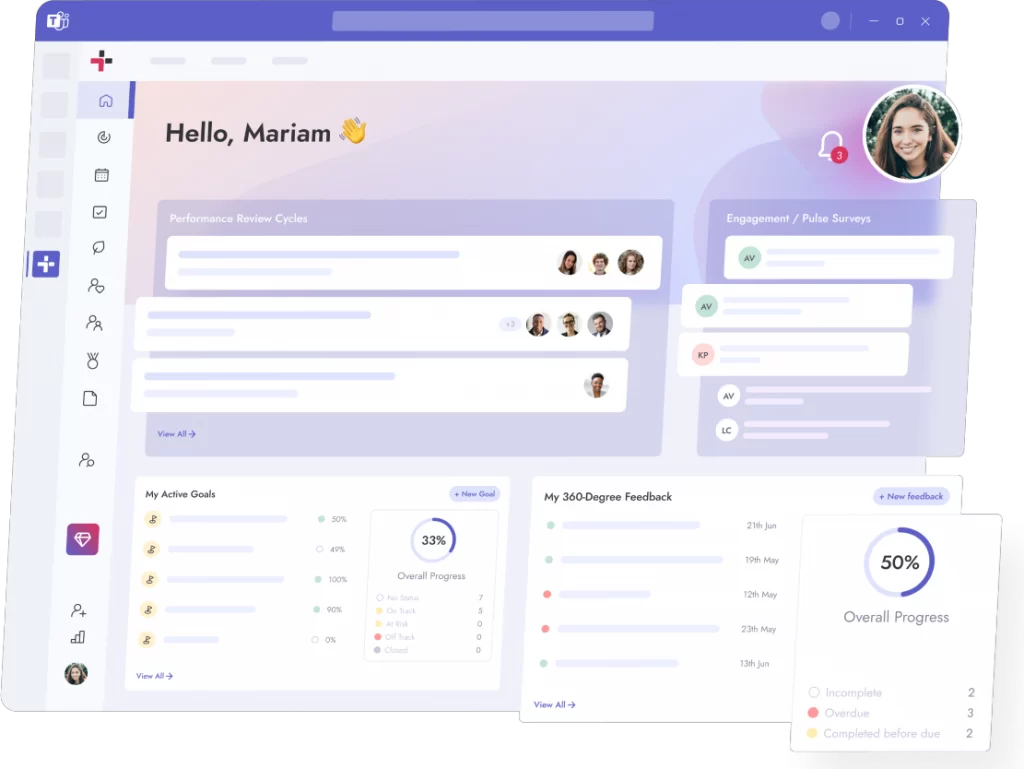
Teamflect is the best performance management software for Microsoft Teams. Period. It just so happens to have one of the strongest feedback modules among its competitors.
Teamflect users have access to extensive libraries of feedback templates and performance review templates that they can use without ever having to leave Microsoft Teams. It also incorporates a very customizable structure so that you can adjust your performance review competencies and much more to your needs!
If you want to, this is where you can view Teamflect’s professional development review template !
Teamflect keeps all your feedback and assessment needs in the flow of work, not needing its users to open up a separate app to conduct performance appraisals or implement 360-degree feedback
Looking to support your feedback with some praise and recognition ? Teamflect users can send out customizable recognition badges, create leaderboards, and do so much more to keep their employees engaged and invested!

4. Mentorship and Coaching:
Incorporate mentorship and coaching into your talent development program. These initiatives offer employees the opportunity to learn from experienced professionals, receive guidance, and gain insights that can accelerate their development. For those looking to implement a mentorship program remotely, we believe this video can prove useful:
5. Technology and Tools:
Leverage technology to enhance learning experiences. Learning management systems, e-learning platforms, and other digital tools can facilitate access to training materials, track progress, and provide interactive learning opportunities.
6. Recognition and Rewards:
Recognize and reward employees for their commitment to learning and development. Acknowledging their achievements, whether through promotions, bonuses, or simple recognition, encourages a culture of continuous self-improvement.
Talent Development Cases to Learn From: Google, LinkedIn, Walmart
If there is one thing we want you to take away from this article, it is that talent development doesn’t have to be boring. In fact, your talent development strategy is where you should be getting as creative as possible.
Below, you will find incredibly intuitive cases of how some of the top organizations in the world are approaching talent development. We hope you will find some inspiration in the way they create talent development strategies!
1. Google’s “20% time” policy

Google’s “20% time” policy allows employees to spend 20% of their work time on projects of their own choosing. This policy encourages employees to be creative and innovative and to develop new skills and knowledge.
The 80/20 talent development strategy doesn’t just give employees the freedom to be creative. It also displays a great amount of trust in their abilities. It is a great way to make sure your talent development program helps build a strong bond between you and your employees. Oh, and the results:
For example, one Google engineer used their 20% time to develop the Gmail email service. Another Google engineer used their 20% time to develop the Google Maps app.
2. LinkedIn’s “Learning Path” program

LinkedIn’s “Learning Path” program is a personalized learning program that helps employees develop the skills they need to succeed in their careers. Employees can choose from a variety of learning paths, such as “Leadership Development,” “Software Engineering,” and “Product Management.”
Each learning path includes a variety of learning activities, such as online courses, articles, and videos. Employees can also track their progress and earn badges for completing different activities.
3. Walmart’s “Academy@Walmart” program

Walmart’s “Academy@Walmart” program is a free training program that helps Walmart associates develop the skills they need to advance their careers. The program offers a variety of courses, such as “Customer Service,” “Leadership Development,” and “Retail Skills.”
Walmart associates can take Academy@Walmart courses online, in person, or at their own pace. Associates who complete courses can earn certificates and promotions.
These are just a few examples of talent development strategies that real-world organizations are using. By investing in their employees’ development, organizations can create a more skilled and engaged workforce.
5 Best Talent Development Strategy Examples
We can’t tell you how you should be developing your talent. As we’ve stated earlier, talent development should be personalized. You know your talent better than we do. So the talent development strategy examples you will find below aren’t direct action plans. Instead they are more along the lines general concepts that you can build on further yourself.
1. Leadership Development Programs:
Create programs focused on identifying and nurturing leadership potential within your organization. These programs often involve mentorship, leadership training, and opportunities for emerging leaders to take on more significant responsibilities.
2. On-the-Job Training and Shadowing:
Encourage employees to learn by doing. Implement job rotation, shadowing senior colleagues, or cross-functional projects to provide practical, hands-on experience and skill development.
3. Cross-Functional Training:
Promote collaboration and broaden the skill sets of your workforce by facilitating cross-functional training programs. Having cross – functional teams , allows employees to learn about different aspects of the business and develop a more comprehensive perspective.
4. Coaching and Mentoring Initiatives:
Establish formal coaching and mentoring programs where experienced employees guide and support their colleagues in achieving their career and personal development goals. One of the best ways to decide the mentor-mentee pairings in your organization is to use a 9-box grid talent analysis .

5. Peer Learning Networks:
Create forums or communities where employees can share their expertise, experiences, and insights with their colleagues. Peer learning networks facilitate knowledge sharing and skill development.
What are some common mistakes people make with talent development?
Now that we’ve gone over some of the best examples of talent development programs, we believe it is about time we discuss what you definitely shouldn’t be doing when you are developing your talent. Here are some of the worst mistakes you can make throughout the talent development process.
1. Neglecting Individualized Plans
One-size-fits-all approaches don’t work in talent development. Avoid the mistake of assuming that all employees have the same development needs and interests. Instead, create individualized development plans based on each employee’s skills, goals, and aspirations.
2. Disregarding Employee Input
Do you know who has the best ideas on talent development and growth? The talent! Employees often have valuable insights into their own development needs. Failing to involve them in the planning and decision-making process can lead to employee disengagement and reduce the effectiveness of your development strategy.
3. Focusing Solely on Training
We’ll just bring in a speaker to do a seminar. Bing bang boom. That’s a wrap. Sounds familiar?
Talent development is not just about training programs. It should also involve mentorship, coaching, job rotations, and opportunities for experiential learning. Since those are some of the more difficult and labor-intensive aspects of talent development, some leaders just bring someone over for a narrow, classroom-based training session and call it a day.
4. Overlooking Diversity and Inclusion
Failing to consider diversity and inclusion in talent development can limit the effectiveness of your strategies. Ensure that your initiatives are accessible and inclusive to all employees, regardless of their background.
5. Ignoring Ongoing Feedback
Talent development should be a continuous process, and feedback is essential. Don’t wait for annual performance reviews to provide feedback. Regularly communicate with employees about their progress and areas for improvement.
Download a FREE Talent Development Template
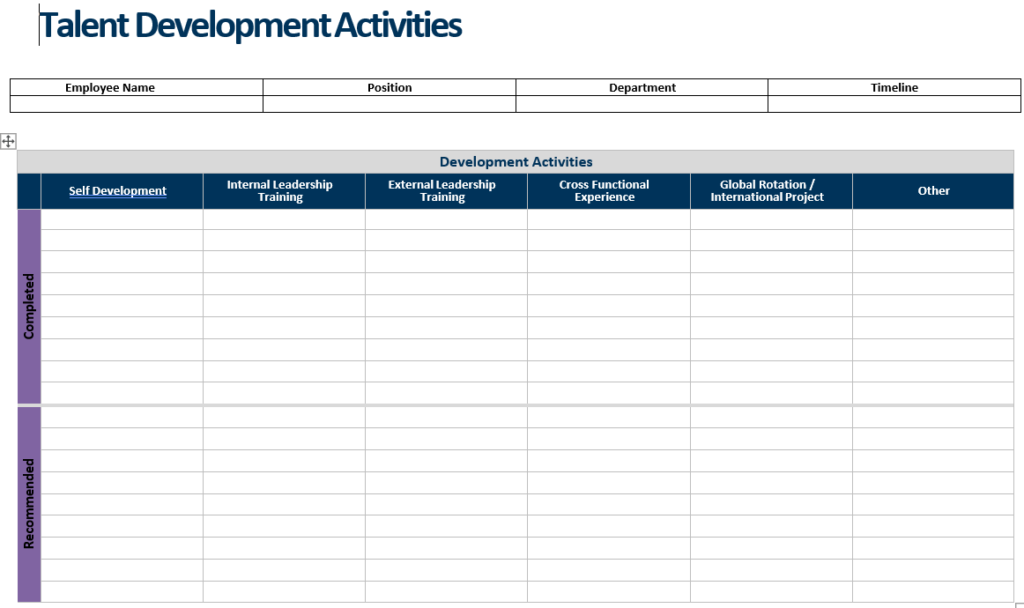
The free talent development template we’ve included in this article is yours to download! It is a nifty little chart for you to keep track of all your employee development ideas and training opportunities. Just click the link below and start mapping out talent development activities right away!
We do have to let you know that activities are only half the battle when it comes to talent development.
Talent development plans and strategies also revolve around setting individual development goals and creating action plans! For all of that and more, we do recommend investing in a performance management solution such as Teamflect, which not only lets you set individual development goals but also allows you to integrate them into Teams meetings, performance appraisals, check-ins, and more!

Related Posts:
Written by emre ok.
Emre is a content writer at Teamflect who aims to share fun and unique insight into the world of performance management.

10 One on One Meeting Templates to Streamline Your Meetings

Year-End Reviews: Best Practices, Sample End of The Year Review Questions + Free Template
Dr John Sullivan Talent Management Thought Leadership
Talent management lessons from apple… a case study of the world’s most valuable firm (part 4 of 4).
October 3, 2011
The purpose of this case study was not to say that you should copy everything Apple does, but rather to point out that with relentless execution and focus on key factors even a firm near bankruptcy can fight its way back to the top. In 13 years Apple has transformed itself from an organization of the verge of collapse to the world’s most valuable firm, amassing a phenomenal innovation record in the process. While Apple’s approach wouldn’t work for every firm, there are lessons to be learned that can influence program design regardless of industry, firm size, or location.
In part 4 of this case study (here’s parts 1 , 2 , and 3 ) on talent management lessons, the attention is on development practices, role of management, and inspirational leadership.
Make your employees “own” their learning, training and development — because Apple frequently produces new products requiring expertise in completely different industries (i.e. computers, music devices, media sales, and telephony), its employee skill set requirements change faster than at almost any other tech firm. While there is plenty of training available, there is no formal attempt to give every employee a learning plan. Just as with career progression, employee training and learning are primarily “owned” by employees. The firm expects employees to be self-reliant. Its retail salesforce for example receives no training on how to sell, a practice that is certainly unconventional in the retail environment. The lesson is simple: providing target competencies and prescribing training can weaken employee self-reliance, an attribute problematic in a fast-changing environment. Employee ownership of development encourages employees to continuously learn in order to develop the skills that will be required for new opportunities.
Make managers undisputed kings — Apple is not a democracy. Most direction and major decisions are made by senior management. “Twenty percent time” like that found at Google doesn’t exist. While in some organizations HR is powerful when it comes to people management issues, at Apple, Steve Jobs has a well-earned reputation for deemphasizing the power of HR. Although Apple was the first firm to develop an HR 411 line, I have concluded that most of the talent management innovations at Apple emanate from outside of the HR function. There is a concerted effort to avoid having decisions made by “committees.” Putting the above factors together, it is clear that at Apple, managers are the undisputed kings. The resulting decrease in overhead function interference, coupled with the increased authority and accountability, helps to attract and retain managers that prefer control. Unfortunately, concentrating the authority has resulted in having some managers being accused of micromanagement and abusing team members.
Having a product focus drives focus, cooperation, and integration – Apple is notably famous in the business press for its “product-focused” approach (versus a functional or regional focus). Everything from strategy to budgets to organizational design and talent management functions are designed around “the product.” One of the primary goals of talent management is to ensure that the workforce is focused on the strategic elements that drive company success. That focus can be distracted with selfish or self-serving behavior that instead shifts the emphasis to the individual, a business function, a particular business unit or even a region. Although deciding to have a product focus is normally a business decision, it turns out that Apple’s strong product focus also has significant positive impacts on talent management.
This laser focus on producing a product makes it easy for everyone to prioritize and focus their efforts. A product focus is so powerful because it’s easy for employees to understand that final products can never be produced without everyone being on the same page. A product focus increases coordination, cooperation, and integration between the different functions and teams because everyone knows that you can’t produce a best-selling product without smooth handoffs and a lack of silos and roadblocks. With a singular focus on producing product, there is simply less confusion about what is important, what should be measured, what should be rewarded, and what precisely is defined as success. A product focus increases the feeling of “we’re all in this together” for a single clear purpose: the product.
Apple purposely offers only a relative handful of products, so employee focus isn’t dispersed among hundreds of products as it is at other firms. By releasing products only when it can have a major market impact, Apple essentially guarantees that every employee can brag that they contributed to an industry-dominating product that everyone is aware of. This focus on product helps to contribute to employees feeling that they are “changing the world.” This focus may also reduce the chance that employees will notice that the day-to-day work environment with its politics and the required secrecy may be less than perfect. And because Apple is no longer a small firm, with nearly 50,000 employees, a unifying and inspiring theme is required to maintain cohesion and a single sense of purpose.
Find a passionate and inspirational leader — although Steve Jobs is no longer the CEO, no analysis of Apple would be complete without mentioning his importance in the firm’s success and the design of its talent management approach. He influenced nearly every aspect of the talent management approach. Not only is he one of the highest-rated CEOs by the public (he is ranked number three on the glassdoor.com list) but as a role model, he has had a huge impact on innovation, productivity, retention, and recruiting. His value is indisputable. The day after he resigned, Apple’s stock value fell by as much as $17.7 billion. It is too early to tell whether the new CEO, Tim Cook, who is markedly less inspirational, will be able to maintain the momentum that Jobs created. He has already shifted some executives and changed the company’s philanthropy approach by instituting a matching gift program for charitable donations.
Other miscellaneous talent management issues — Apple executives are certainly in high demand at other firms that seek to be equally as innovative (for example, the head of the retail operation recently left to become CEO at JCPenney). Despite this demand, Apple certainly doesn’t have any significant turnover problems. You can, however, find plenty of negative comments about Apple on sites like glassdoor.com. Some describe Apple’s approach toward employees as a bit arrogant, and employees are certainly pushed to their limits. If you don’t “bleed six colors,” you simply won’t enjoy your experience at Apple for long. Although originally the firm emphasized employee recognition, it is not easy for those outside the firm to connect recent product successes to a single individual or team.
Apple is a team environment. Although many teams are forced to operate in isolation, that actually helps to build team cohesion. The competition between the different development teams is also intense, but that also helps to further strengthen cohesion. Like most engineering organizations, its decision-making model is certainly focused on data. Apple management likes to control all aspects of its products, but despite that, it is one of the best at using outsourcing to cover areas like manufacturing, which it has determined is not a core corporate competency.
Final Thoughts
Although Apple clearly produces extraordinary results, its approach to talent management is totally different than that of Google and Facebook, which also produce industry-dominating results. As Apple has grown larger, its rigor around sustainable innovation has grown as well, a feat that proves impossible for most organizations including the likes of HP, Microsoft, and Yahoo.
The three “big picture” learnings I hope you walk away from this case study with include:
- Focus on “the work” — it is management’s responsibilty to do whatever is necessary to keep work exciting and compelling.
- Strive for continuous innovation — Apple’s emphasis on being “different” is so strong that it can’t be overlooked by any employee or applicant. It delivers industry-dominating innovation levels because everyone is expected to.
- Deliver on your brand — Apple works hard to make sure that potential applicants, employees, and even competitors admire its products, the firm, and how it operates.
These three factors are not easy to copy, but they are certainly worth emulating. If you can bring them and the results that they produce to your firm, there is no doubt that you will be a hero.
Share this:
Tags Case Study
About Dr John Sullivan
The “No Application Required” Recruiting Strategy (Providing employed top talent with “job search deniability”)
Top employees are reluctant to apply for external jobs because it makes them appear disloyal. …
- Our story menu_book Our story Liberating human potential since 1980.
- Meet the team group Meet the team Over 400 passionate people worldwide.

View Case Study

- All Case Studies
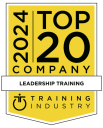
Featured Insights

Read the article

- All Insights

Aligning global & local Talent Management strategies at Atos

Atos is an international information technology services company. They employ over 74,000 people in 48 countries. Impact Polska worked with Atos to improve their Global Talent Policy and align global and local talent management strategies in Poland.
In 2012 Atos designed a Global Talent Policy that local businesses were required to represent at a regional level in their offices.
This policy focused on five strategic areas:
- Talent Identification
- Talent Attraction
- Talent Development Programmes
- On-going Learning
- On the job experience
According to the Global Talent Policy the role of HR was to:
- Implement the policies and processes necessary to guarantee fair management practices
- Set up initiatives that will ensure employee skills are in line with company strategy
- Assist managers and employees in constructing their individual development plan.
The challenge for Atos Poland was to:
- Represent the Global Talent Policy alongside their local business strategy
- Engage their major stakeholders in the process.
The HR Director and Talent Manager set an ambitious goal to become change agents in developing a pro- talent culture across the Polish organisation. It was clear to them that generating a measurable return on investment from Talent Management would require time and also effective levels of engagement across the entire business.
Atos chose Impact Polska as their business partner, because our approach would help them to create solutions that were strategic and engaging for all key business stakeholders.
Impact and Atos worked closely together to implement the first phase of the Global Talent Policy.
Our main goals were to align a local talent strategy in with the global policy and prepare the management top team, HR change agents, line managers and employees to fulfil their roles in identification of local and global talent. Impact helped Atos Poland to:
- Prepare a communication about the contents of the Global Talent Policy
- Conduct two strategic, experiential workshops to engage the management team in creating a local talent strategy
- Introduce a 70-20-10 development concept
- Design a talent workshop for line managers
- Prepare their HR professionals to deliver the talent workshops
Following our first phase of experiential interventions the Talent Management process is now a business priority for the top team in Atos Poland.
As a result of our workshops a local talent policy has been created and the team of HR professionals feel better prepared to take the role of the change agent in the talent management policy implementation. We now plan to design and deliver talent development and engagement initiatives for all employees within Atos Poland.

Valuing your talent: Case studies
Find out how other businesses are using people measures to improve their organisations through these case studies
In this series
The Head of Leadership Development at the world’s largest steel company, Brian Callaghan, describes how people measures and performance management systems are helping ArcelorMittal build their talent base.
The retailer’s people are at the heart of the organisation’s success and growth. Find out how the company’s HR strategy and operations are specifically tailored to reflect the individual needs of their employees
Employing over 180,000 people across 40 countries, Capgemini relies on the expertise and skills of its workforce to deliver high organisational and financial performance. Faced with challenges such as siloed departments and reporting of often disconnected data, Capgemini sought to create a tool that would offer access to key human capital data and insights in one place.
This case study provides insight into Coca-Cola Enterprises’ (CCE) data analytics journey. Given the complexity of the CCE operation, its global footprint and various business units, a team was needed to provide a centralised HR reporting and analytics service to the business. This led to the formation of a HR analytics team serving 8 countries. Read the full case study to find out how the HR analytics team were able to increase data maturity and improve business performance.
Enterprise Rent-A-Car places a lot of importance on the gathering and interpreting of workforce data. We interviewed Leigh Lafever-Ayer, HR Director UK & Ireland at Enterprise Rent-A-Car to find out more about the data they collect, and how they use it.
Halfords, a specialist retailer of leisure and car products, provides a useful current case study of effective human capital management reporting in action and demonstrates the importance between the successful alignment of business and HR strategy underpinned by clear HCM measures.
London Councils is a lobbying organisation working across political parties to promote the interests of London’s 32 borough councils and deliver services on behalf of the public. One of the ways London Councils provides support is through a professional HR Metrics and Workforce Planning network which helps London boroughs report on, explore and share people data to improve performance.
Microsoft is a data-driven organisation that puts data-led decision making at the heart of its business strategy. Targeted gathering of their human capital data is enabling them to gain analytical insights and solve practical business problems across their organisation.
This case study explores the application of recognition technology within a complex organisational environment, and offers insights from senior HR leadership as to how to best implement technology to drive up engagement
Unilever’s Senior Vice President of Leadership and Organisational Development, Leena Nair, describes their HR vision – People, Place, Performance – and how people measures are helping to secure the top talent, make Unilever the best place to work, and ensure their people are performing to their productive best.
CFO, Xavier Heiss, explains how the two business functions have worked together to increase the value of the services they provide through understanding the intangible value people bring to their customers, such as goodwill.
Tackling barriers to work today whilst creating inclusive workplaces of tomorrow.
Bullying and harassment
Discover our practice guidance and recommendations to tackle bullying and harassment in the workplace.

Learn how to measure turnover and retention, and understand why people leave organisations

Creating a holistic offering to help improve workforce wellbeing

14 Nov, 2023

6 Nov, 2023
More case studies

A case study of an HR function shifting from an Ulrich+ model towards an employee experience-driven model

A case study of a people function shifting to a four-pillar model to deliver a more consistent employee experience throughout the organisation

A case study on moving to a lean, strategic HR model that operates more efficiently to support business objectives

A case study on developing strategic partners, aligning teams, increasing data analytics skill, and transitioning the L&D team into an internal academy

Case Study: Aligning Talent Strategy with Core Values at Oxfam

THE CHALLENGE: Managers were not engaged in building talent due to ineffective technology and lack of a link to a comprehensive talent management strategy.
Oxfam is a non-profit organization dedicated to changing lives around the world by working to end the injustice of poverty. Everything they do is driven by their core values of empowerment, inclusiveness, and accountability. They knew it was important for their talent management strategy and technology to support their mission and their values.
However, a lack of clear talent development practices and policies, along with cumbersome technology, led to managers who were not engaged in the talent management process. Performance reviews had a completion rate of only 23%. Managers needed help building their skills around setting goals and delivering feedback .

Patricia (Pat) Hylton, Associate Director, People, Culture & Global Human Resources, fully embraced the opportunity to transform Oxfam’s talent management strategy . As work began on the project, she focused on this question: “How can we make the process more worthwhile, beneficial, useful, and get more buy-in, more ownership from an employee and management perspective?” Download the full case study.
Learn how TQ Talent Insights™ can be used in the real world
Tq talent insights™ demo demo, leveraging behavioral insights to influence employee behavior download, assessments improve hiring and development article, how people data can better inform and guide decision making podcast.

Whether is it out of necessity due to losing a job or a desire to…

I know people who can take time off easily… they don’t stress, they’re never tempted…

A few years ago, I went through some training in Design Thinking with the goal…

Developing Customer Empathy Customer empathy is the foundation on which product innovation should begin. This…

A Year in Review The last year has been a rollercoaster for all of us. …

Diversity is one of those challenging topics that everyone seems to agree on but not…

What’s top-of-mind when you think of using assessments in your workplace? That’s what I asked…

During this hybrid era of work, I have noticed and appreciated how open, personal, and…

- myTMI-Fellow
Certifications for Professionals

- Rebooting Talent Management
The TMI Way
We can't wait to hear from you
Innovative HR Solutions

Discover how TMI credentials are designed to accelerate your career growth. Explore how TMI incorporates Talent Management into the practice and systems of Human Capital Management. Learn how you can steer your future confidently through TMI's research driven Talent Management standards. Fellow programs equip global HR professionals with the latest in Talent Management in the transformational way.
Credentials for HR professionals
Explore how the TMP ™ , STMP ™ , and GTML ™ credentials can take your HR career places, or add to the capabilities of your promising HR staff and leaders.
TMI-ETMS™ Enterprise System Standards & Credentials
Revitalize your enterprise HR system through the TMI-ETMS by implementing the latest in international.
Partner with TMI to break into Talent Management
If you are interested in consulting, training or education, partner with TMI to join the global league of TMI aligned institutions, companies and industries.
Experience the Revolutionary TMI Way
Learn the latest about how Talent Management is transforming HR into a future oriented business hyperfunction.

Apply for a TMI Credential
To apply for a TMI certification, simply register yourself for the program by creating your account.
Check Your Eligibility
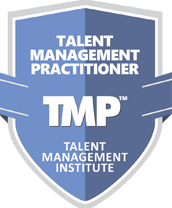
Talent Management Practitioner
TMP™ is the best starting qualification for breaking into Talent Management.
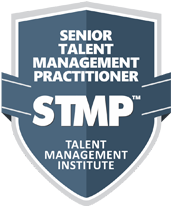
Senior Talent Management Practitioner
STMP™ is the next step for mid-career HR professionals wanting to accelerate their careers.
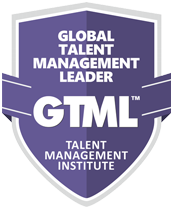
Global Talent Management Leader
GTML™ is ideal for senior HR professionals who are ready for spearheading a revolution through insightful Talent Management.

Digitally Badged TMI Credentials
The TMP™, STMP™ and GTML™ come digitally badged.
QualiFLY™
You can QualiFLY™ if you are a student or an alumnus of a TMI-recognized institution.
TMI Certification Exams
Available across 183 countries, TMI certification exams are built on 5th generation TEI technologies by ExamStrong ™ , the world's largest exam-delivery ecosystem specializing in high-stakes certification exams.
TMI Learning Journeys
Learn more about the journeys of TMI-certified professionals.
TMI Global and Associate Fellow programs turn HR professionals into global Talent Leaders who can drive growth with their superlative strategic ability, business perspective and readiness for change. In the last three years, more than 150 senior HR professionals and HR leaders from 46 global organizations across industries have completed these programs that establish new standards for the practice of talent management as a driver of organizational success and business competitiveness. You can contact us here for more information.
- Associate Fellow Program in Talent Management
- Global Fellow Program in Talent Management

Know TMI–ETMS™

TMI–ETMS10™ and TMI–ETMS14™ certified organizations are effective for restructuring Talent Management in an organization. With TMI, organizations are better, more agile and better prepared for challenges that are to come.
Enterprise Certifications
- The TMI–ETMS™ Vocabulary
- The TMI–ETMS™ Credentialing Model
- Enterprise Impacts
- TMI–ETMS10™
- TMI–ETMS14™
- Process & Certification
- TMI–ETMS™ Training & Auditor Programs
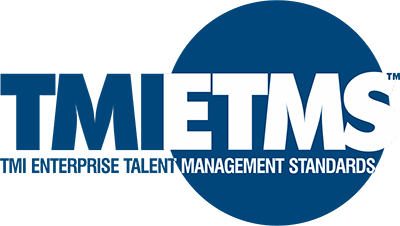
The TMI-Enterprise Talent Management Standards power enterprise HR with the latest in Talent Management.
To choose a TMI–ETMS™ version most appropriate for your organization!
Write to us via the contact form.
- Discover More
Become a TMI Partner

Partnering with TMI means building a powerful structure of Talent Management thought and practice resulting in business profits through standards, certifications and networks.
TMI Partnership Opportunities
Get your HR staffers and managers TMI certified on Talent Management by adding TMI into your training regimen. One step toward embedding TMI credentials in your institutions curricula is to become a TMI-ETMS ™ consulting partner. Join us to be a part of the groundbreaking work of Talent Management.
- Authorized Education Provider Program – For Training Companies
- Academic Affiliation Program – For Business Schools and HR schools
- Corporate Partnership Program – For Organizations
- TMI Advocacy Program – For HR Associations and Professional Bodies
- TMI Enterprise Talent Management System (ETMS™) – For HR Consulting Organizations
The TMI Way leads to Talent Management becoming an enterprise-wide consciousness. TMI standards and frameworks are making Talent Management act as a measurement for the state and quality of an organization's readiness for the future.
- Talent Management Philosophy
- Strengthening HR
- Organization-Wide Talent Management
- Turning Workforce into Talents
- Spreading Talent Management
- Establishing Talent Management Roles
- EXPLORE TMI CREDENTIALS FOR PROFESSIONALS >
- EXPLORE TALENT SYSTEM CERTIFICATIONS FOR ENTERPRISES >
- EXPLORE TMI-FELLOW PROGRAMS FOR HR LEADERS >

If you already have an international qualification in HR from a TMI-recognized institution, then acquiring a TMI credential is easier and faster for you! Learn more to see if you can QualiFLY ™ to a TMP ™ , STMP ™ or GTML ™ certification.
- Check If You QualiFLY™
Discover QualiFLY™
- Get TMI Credentialed Fast!
- Why QualiFLY™ Works
- The QualiFLY™ Mechanism
- TMI-Recognized Institutions
QualiFLY™ Tracks
Institutions.
You can QualiFLY ™ if you are a student or an alumnus of a TMI-recognized institution. Click below to learn more and to see if you QualiFLY ™ .
Inside Starbucks: A Case Study on Talent Management
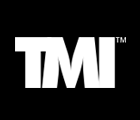
Starbucks, the brand synonymous with ‘coffee’ shines not just for its iconic drinks and unique experience but also for its exceptional talent management strategies. From innovative recruitment practices to a strong focus on diversity and inclusion, the cafe chain prioritizes building a workforce that reflects its values and serves its diverse customer base.
The company’s emphasis on continuous learning makes sure that employees are equipped with the skills needed to thrive in their respective roles. This case study explores the core elements of Starbucks’ talent acquisition, training, performance management, and succession planning methods.
Starbucks: A Brief Overview
Since its inception in 1971, Starbucks has grown into a global powerhouse, boasting over 32000 stores in 80 countries worldwide. This coffee giant has redefined the coffee experience, setting itself apart with its commitment to quality and community.
What distinguishes Starbucks is not just its coffee but also its culture, grounded in the mission to inspire and nurture the human spirit. This ethos is evident in the coffee giant’s core values, which prioritize creating a culture of warmth and belonging, ensuring that everyone feels welcome.
Starbucks' success is not solely measured by its revenue, which reached USD $29.46 billion in 2023 , but also by its impact on people and the planet. The company has made significant strides in sustainability, with initiatives like the Greener Stores framework and a commitment to reducing carbon emissions by 50% by 2030. This dedication to ethical sourcing and environmental stewardship positions the company as a leader in corporate responsibility within the coffee industry.
As it continues to expand, its dedication to quality, community, and sustainability remains steadfast. The Starbucks experience transcends borders and cultures, fostering connections that enrich lives worldwide.
Talent Acquisition at Starbucks
Starbucks' talent acquisition strategy underscores its commitment to excellence and inclusivity. This helps in setting a high standard in the industry. It leverages technology to access a diverse pool of candidates through innovative recruitment techniques.
The company's forward-thinking approach has yielded impressive results, with a global retail workforce boasting 53% gender diversity and 23.5% representation of people of color in retail and manufacturing roles. This achievement speaks to Starbucks' dedication to diversity and inclusion, setting a benchmark for others to follow.
Inclusion in Hiring Practices
- Starbucks places a strong emphasis on inclusion in its hiring practices. The company strives to create an environment where every employee feels valued and respected, regardless of their background or identity.
- This inclusive approach not only fosters a sense of belonging among employees but also enables the brand to better understand and serve its diverse customer base, driving business success.
Commitment to Learning and Development
- Central to Starbucks' talent acquisition strategy is its commitment to continuous learning and development. This further ensures employees have the skills and knowledge needed to excel.
- The company offers a range of training programs aimed at enhancing employees' skills and advancing their careers. On average, Starbucks employees receive 20 hours of training per year, a testament to the company's investment in its workforce.
- The coffee giant’s dedication to learning and development not only contributes to its success but also sets a standard of excellence in talent acquisition across industries, showcasing its thought leadership in the field.
Training and Development Programs
Starbucks’ commitment to excellence extends beyond its products to its training and development programs. These programs are designed to cultivate skilled and knowledgeable employees who embody the brand’s values.
Comprehensive Training Approach
- Starbucks' training programs are designed to be comprehensive and engaging. This makes sure that employees/partners are equipped with the skills and knowledge needed to excel in their roles.
- The company follows the 70/20/10 model of learning, where 70% of learning happens through on-the-job experiences, 20% through feedback and mentorship, and 10% through formal training programs.
Initial Training Process
- New partners undergo a thorough training process that includes the Starbucks Experience classes, covering the company's history, legacy of social responsibility, and culture.
- These classes are taught by dedicated trainers responsible for ensuring that each partner understands and embodies the Starbucks ethos.
Ongoing Training and Support
- Each store has a learning coach for new joiners. A partner who has shown a passion for training, to guide new hires through the Barista Basics hands-on training program.
Potential Enhancements
- Starbucks could incorporate video-based learning to provide a consistent learning experience across all stores and enable social learning among partners.
- This approach would further enhance the training programs, allowing the company to continue delivering exceptional customer experiences that keep customers coming back.
Overall Impact
- The training and development programs of the brand exemplify its dedication to its employees' success and its commitment to delivering outstanding customer experiences.
- By investing in its employees and fostering a culture of continuous learning, Starbucks has built a talented workforce that drives the company's success.
Performance Management
Starbucks' performance management is a strategic process, integral to fostering excellence, driving growth, and ensuring every partner is equipped to succeed. Unlike traditional reviews, its approach is continuous and inclusive. It emphasizes regular feedback, coaching, and goal setting to empower partners to achieve their full potential.
Some insights into Starbucks’ performance management are as follows:
- Continuous Improvement: The company's emphasis on continuous feedback and coaching helps partners understand their performance, recognize achievements, and identify areas for improvement. This culture of continuous improvement is key to Starbucks' success.
- Utilization of Performance Metrics: It uses performance metrics, such as customer satisfaction scores, to evaluate individual and team performance. These metrics ensure alignment with the company's goals and values, driving overall success.
- Inclusive and Transparent Practices: Partners are actively involved in setting their performance goals, fostering a sense of ownership and accountability. This inclusive approach promotes trust and collaboration, key pillars of Starbucks' organizational culture.
- Extensive Training and Development: The cafe chain provides extensive training and development opportunities. This makes sure that partners have the skills and knowledge needed to excel. The company is highly committed to partner development.
- Motivating Compensation and Benefits: Starbucks offers competitive compensation and benefits packages, motivating partners to perform at their best. This commitment to partner well-being further contributes to the company's overall success.
- Commitment to Partner Success: Starbucks' performance management system reflects its dedication to partner success. By fostering a culture of feedback, accountability, and continuous improvement, it ensures partners are engaged, motivated, and empowered to deliver exceptional results.
Succession Planning and Leadership Development
Succession planning and leadership development at Starbucks are integral components of the company's talent management strategy. These initiatives are designed to identify and cultivate future leaders within the organization. This ensures a strong leadership pipeline and a diverse and inclusive workforce.
The key aspects of succession planning and leadership development at Starbucks are as follows:
- Strategic Succession Planning: The company’s talent management strategy is deeply rooted in identifying and nurturing high-potential employees for future leadership roles. This comprehensive process ensures a consistent pipeline of capable leaders ready to assume key positions as they become available.
- Internal Promotion Emphasis: Starbucks strongly believes in promoting from within its workforce whenever feasible. This approach not only motivates employees but also cultivates leaders who possess a profound understanding of the company's culture and values, fostering continuity and stability.
- Diversity and Inclusion Commitment: Starbucks is dedicated to fostering diversity and inclusion within its leadership ranks. With 47% gender diversity and 18.5% BIPOC (Black, Indigenous, and People of Color) representation in corporate roles as of 2023, the brand is actively building a leadership team that mirrors the diversity of its customer base.
- Comprehensive Leadership Development Programs: Starbucks offers a diverse range of leadership development initiatives, including the Starbucks Leadership Experience program. These programs are designed to equip participants with the necessary skills, knowledge, and practical experience to excel in leadership roles within the organization.
- Cultivation of a Learning Culture: Starbucks promotes a culture of continuous learning among its employees. Through its tuition reimbursement program, partners are encouraged to pursue higher education and professional development opportunities, further enhancing their leadership capabilities.
- Commitment to Talent Nurturing: Starbucks' approach to succession planning and leadership development underscores its dedication to nurturing talent and cultivating a diverse and inclusive leadership team. By empowering its employees to succeed and grow within the organization, it ensures its continued success and growth in the future.
Starbucks' talent management strategy stands as a testament to the power of investing in people. From its innovative recruitment methods to its comprehensive training and development programs, the company exemplifies excellence in talent acquisition and management.
The company's commitment to diversity and inclusion is reflected in its workforce demographics, with significant representation of women and BIPOC individuals in key roles. This dedication not only mirrors the brand’s core values but also enhances its ability to connect with a diverse customer base.
Furthermore, Starbucks' emphasis on continuous learning and development underscores its belief in the potential of its employees. By offering abundant opportunities for growth and advancement, it ensures that its partners are equipped with the skills and knowledge necessary to excel in their roles.
As Starbucks continues to expand globally, its talent management practices will be instrumental in shaping its future. By remaining steadfast in its values and investing in its most valuable asset, its people, Starbucks is poised to uphold its legacy of success for years to come.

20 Key HR Metrics - A Definitive Guide To Evaluate Success
Maximize your HR impact with this comprehensive guide to:
- Review a list of top 20 talent management metrics
- Learn how to calculate each metric
- Discover what motivates the employees
- Pick the metrics that best align with your business needs
- Measure the performance of your employees
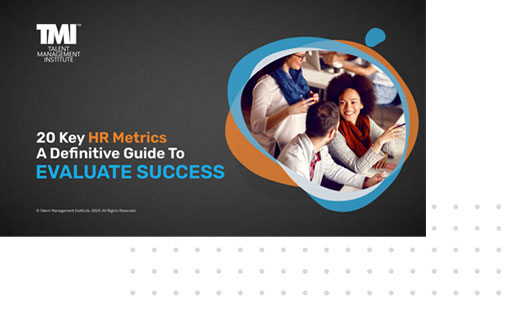
This website uses cookies to enhance website functionalities and improve your online experience. By browsing this website, you agree to the use of cookies as outlined in our privacy policy .
Start Your Journey With TMI By Creating An Account Today.
- Manage your professional profile conveniently.
- Manage your credentials anytime.
- Share your experiences and ideas with TMI.
Sign In to Your Account
- Remember Password
- Forgot Password?
Forgot Password

CredBadge™ is a proprietary, secure, digital badging platform that provides for seamless authentication and verification of credentials across digital media worldwide.
CredBadge™ powered credentials ensure that professionals can showcase and verify their qualifications and credentials across all digital platforms, and at any time, across the planet.

Verify A Credential
Please enter the License Number/Unique Credential Code of the certificant. Results will be displayed if the person holds an active credential from TMI.
- Please enable javascript in your browser settings and refresh the page to continue.
- Talent Acquisition
- Talent Acquisition Strategy and Process
Case Studies: Create a Talent Acquisition Strategy
Author(s): Laura Ribadeneira , Christine Penhale , Alyssa Lampert
Unlock Case Study
Get instant access.
Select Social Platform:
Refer to these case studies for examples of talent acquisition (TA) strategies.
These case studies will give you examples of:
- Leveraging technology to achieve a TA strategy.
- Deploying a differentiated TA strategy model.
- Fulfilling difficult talent demands with a TA strategy.
Related Content
Request a demo, it research & advisory services.
Please confirm the appointment time and click Schedule.
Your call is being booked. A representative will be available to assist you if needed.
- +1(888)-855-5328

How to Build an Effective Talent Management Strategy
Behind every hire is a human being. That’s why every step of the employee lifecycle should be as seamless as possible. A strong talent management process helps an organization minimize employee turnover, boost performance, and keep employees happy .
With a comprehensive Employer of Record (EOR) solution , companies can streamline hiring, onboarding, and even payroll. Let’s explore how to build an effective talent management strategy today — so you can unlock global growth tomorrow.
What is talent management?
Talent management , also known as human capital management, is how employers recruit, build, and retain a productive, engaged workforce. Strategic talent management can help improve overall business performance, strengthen company culture, and ensure a business remains competitive.
Talent management usually includes recruitment, onboarding, engagement, performance, training and development, and other parts of the employee lifecycle. According to McKinsey, organizations that prioritize talent management consistently outperform competitors . By putting talent first, companies can gain a competitive advantage and improve organizational performance.
Talent management vs. talent acquisition: What’s the difference?
Talent acquisition is a part of the talent management framework. Both talent acquisition and talent management are essential to the health of any organization, yet they are not the same. Talent acquisition focuses on bringing in the right talent to the company.
Talent management, on the other hand, helps ensure employees thrive within the organization and contribute to the company’s overall growth. While talent acquisition aligns with the immediate needs of the business, talent management influences the long-term strategic planning of the organization.
What is an effective talent management strategy?
Talent management covers workforce planning, attracting, selecting, developing, retaining, and transitioning talent. What does talent management include? A strong strategy involves a range of employer responsibilities:
- Planning ahead. Determine the necessary human capital, key roles, and employee development plans for a strong business strategy.
- Attracting top talent. Connect with potential job candidates through recruitment campaigns, job posts, and referrals. You can also leverage premium recruiting tools within G-P Meridian Prime™ to find top global talent. Search the best talent pools, anywhere in the world, to find the perfect fit for the role based on your unique needs, including industry and occupation.
- Selecting the right team. High performing employees are up to eight times more productive . Find the best applicants by assessing relevant skills. Behavioral interviews and skill assessments can be highly effective when hiring for more technical roles.
- Developing a comprehensive onboarding and offboarding process. Once an employee is hired, an effective onboarding process is key to improving employee retention and employee performance. Give your team a seamless experience with best-in-class human capital management (HCM) solutions that enable swift and compliant hiring and onboarding in 180+ countries.
- Retaining high-performing employees. Hiring new talent is more expensive than retaining existing talent. According to new benchmarking data from the Society for Human Resource Management (SHRM) , the average cost per hire in the United States was USD 4,700. Companies should create career growth and development opportunities, build competitive total compensation packages, and offer increased flexibility to ensure talent retention.
- Transitioning teams. Ensure a smooth onboarding and offboarding experience for your teams. G-P’s Global Growth Platform™ helps handle offboarding with sensitivity, care, and in compliance with local labor laws.
Attracting and retaining talent involves careful management of every step of the employee lifecycle. From recruiting to employee development, HR professionals can improve retention with an effective talent management strategy in place.
What are the six principles of effective global talent management?
Experts from the MIT Sloan Management Review outlined six key principles that make up an effective global talent management strategy. This collaborative research study was built to examine the specific steps global companies can take to help recruit, develop, and deploy the right talent.

| Alignment with strategy |
| Internal consistency |
| Cultural embeddedness |
| Management involvement |
| Balance of global and local needs |
| Employee branding through differentiation |
These six principles of talent management still hold true in today’s global environment:
- Alignment with strategy. Given your company’s business objectives, what kind of talent do you need? Strategic flexibility is essential for organizations to adapt to evolving business goals.
- Internal consistency. Consistency is key to a strong talent management system. After all, implementing practices in silos may be counterproductive. Internal consistency refers to the way a company’s talent management practices work together. For example, quarterly performance reviews must be conducted across the entire organization in order to successfully address skills gaps .
- Cultural embeddedness. The most successful companies go out of their way to integrate brand core values and principles into every step of the talent management process. From recruitment to succession planning , culture is at the core of a positive employee experience.
- Management involvement. Broad ownership of the talent management process can help successfully drive recruitment, succession planning, and other key business goals. Make sure team leads play a key role in talent recruitment and are directly involved in training and development initiatives.
- Balance of global and local needs. Talent management across multiple countries, cultures, and industries isn’t easy. Research shows that companies should work on responding to local demands while building a coherent global HR strategy and management approach. With a reliable Employer of Record (EOR) solution in place, you can expand and manage teams easily across 180+ countries in full compliance with local laws, without having to set up new entities.
- Employee branding through differentiation. What is your unique selling point for recruiting top talent? Marketing is key to attracting skilled talent.
Be sure to differentiate yourself from competitors in order to attract professionals that align with your core values. Clearly outline the necessary skills for the role and highlight how upskilling aligns with your overall business strategy.
Why is global talent management important?
By planning ahead, leaders can help organizations attract a wider pool of applicants with unique skills, experiences, and perspectives.
One of the biggest challenges global companies face is building — and maintaining — a strong talent pipeline. Talent management can help businesses to:
- Promote succession planning. Identify necessary roles and source top talent with strong skills to fill them.
- Simplify onboarding. With a reliable Employer of Record (EOR) in place, you can bring new hires onto your team starting in just minutes.
- Foster strong employee engagement. Talent management helps allow high-performing employees to collaborate and remain engaged. Research shows that if an organization has an engaged workforce, they are more productive and loyal .
- Streamline benefits . Considered a part of total compensation, competitive benefits are key to attracting and retaining talent. According to G-Ps 2023 Global Growth Report , 49% of employees believe global companies provide access to better pay and benefits. A reliable talent management strategy includes statutory and in-kind benefits.
- Save money. The cost of hiring a new employee can range from 50% to 200% of an employee’s annual salary. For example, the cost of employee turnover can fall anywhere between USD 660,000 and USD 2.6 million per year if your organization employs 100 people with a salary of USD 50,000 per year.
Talent management strategies can reduce turnover by improving the employee experience and reduce one of your company’s biggest expenses: hiring new talent.
Build and manage global teams with G-P.
In today’s evolving business landscape, one thing is clear: Talent management is more important now than ever. But navigating global payroll, ensuring compliance with local employment standards, and managing global teams can be daunting . That’s where G-P comes in.
We help companies build and manage global teams anywhere in the world — without setting up new entities — while maintaining compliance every step of the way. Advanced tools like our Talent Supply Dashboard allow you to customize your acquisition strategy and find your ideal candidates in seconds, putting a world of talent at your fingertips.
As businesses everywhere seek opportunities beyond borders and boundaries, partner with G-P today to unlock global growth.
Don't miss these

Why Is Employee Engagement Important Globally?

What Is Strategic Workforce Planning?

5 Effective Communication Strategies for Managing a Global Team
Global thinking. global growth. let’s go ..
countries available
payroll accuracy
global partners
customer satisfaction
- Harvard Business School →
- Faculty & Research →
- HBS Case Collection
Talent@Tencent
- Format: Print
- | Language: English
- | Pages: 27
About The Author
Tarun Khanna
Related work.
- February 2019
- Faculty Research
- Talent@Tencent By: Tarun Khanna
- SUGGESTED TOPICS
- The Magazine
- Newsletters
- Managing Yourself
- Managing Teams
- Work-life Balance
- The Big Idea
- Data & Visuals
- Reading Lists
- Case Selections
- HBR Learning
- Topic Feeds
- Account Settings
- Email Preferences
Share Podcast

Microsoft: A Case Study in Strategy Transformation
If you’re leading your team through big changes, this episode is for you.
- Apple Podcasts
In early 2015, Microsoft’s senior leaders were facing a set of difficult decisions. The firm had been struggling to innovate and grow as fast as its competitors. Now they were considering new opportunities that would yield higher growth but lower margins — like shifting away from perpetual licensing to focus on subscription sales.
Harvard Business School professor Fritz Foley studied this period of transformative change at Microsoft for a business case study he wrote. In this episode, he shares how Microsoft’s leaders analyzed different options and worked to get both investors and employees on board with new ideas about growth. He also explains how the company’s risk-averse culture evolved in order to execute such a huge transformation.
Key episode topics include: strategy, growth strategy, business models, corporate governance.
HBR On Strategy curates the best case studies and conversations with the world’s top business and management experts, to help you unlock new ways of doing business. New episodes every week.
- Listen to the original Cold Call episode: The Transformation of Microsoft (2018)
- Find more episodes of Cold Call
- Discover 100 years of Harvard Business Review articles, case studies, podcasts, and more at HBR.org
HANNAH BATES: Welcome to HBR On Strategy , case studies and conversations with the world’s top business and management experts, hand selected to help you unlock new ways of doing business.
In early 2015, Microsoft’s senior leadership team was facing a set of difficult decisions. The firm had been struggling to innovate and grow as fast as its competitors. Now, they were considering new opportunities that would yield higher growth, but lower margins like shifting away from perpetual licensing to focus on subscription sales.
Today, we bring you a conversation with Harvard Business School professor Fritz Foley, who studied this period of transformative change at Microsoft for a business case study he wrote. In this episode, you’ll get a window into how Microsoft’s leaders analyzed different options and got both investors and employees on board with a different idea of growth. You’ll also learn how the company’s risk-averse culture had to evolve in order to execute such a huge transformation.
This episode originally aired on Cold Call in July 2018. Here it is.
BRIAN KENNY: Electronics enthusiasts in the 1970s looked forward to it every year: the January issue of Popular Electronics . That is because that issue was known for featuring the coolest up-and-coming products in the world of electronics. And when the January 1975 issue hit newsstands, it did not disappoint. The cover was adorned with the first available image of the Altair 8,800, the world’s first mini-computer kit. It may not have been the shot heard around the world, but many say that it was the spark that ignited the home computer revolution. That very magazine inspired a young Paul Allen and Bill Gates to turn their passion for computers into a business that subsequently became an empire.
Today, Microsoft Corporation is the third most valuable company in the world and the world’s largest software company. But after four decades of buffeting the headwinds of the very industry it helped to create, Microsoft is at a turning point and the way forward is not entirely clear. Today we’ll hear from Professor Fritz Foley about his case entitled “The Transformation of Microsoft.” I’m your host, Brian Kenny, and you’re listening to Cold Call .
SPEAKER 1: So, we’re all sitting there in the classroom.
SPEAKER 2: Professor walks in.
SPEAKER 3: And they look up and you know it’s coming. The dreaded cold call.
BRIAN KENNY: Professor Fritz Foley’s Research focuses on corporate finance. He’s an expert on investment capital structure, working capital management, and a range of related topics, all of which probably factor into the case today. Fritz, thanks for joining us.
FRITZ FOLEY: Thanks so much for having me.
BRIAN KENNY: So, everybody pretty much knows who Microsoft is, and I think people will be really interested in getting a glimpse into where they were at this turning point in the company’s history. Still a very, very important company in the landscape of the technology industry and beyond. So, I think people will relate right away to this, but let me ask you, if you could start just by setting the stage for us. How does the case begin? Who’s the protagonist and what’s on her mind?
FRITZ FOLEY: Yeah, so the protagonist is Amy Hood, who is Microsoft’s CFO. She also was a student here at HBS at the time that I was in the PhD program. So, I’ve known her for some time and she’s facing a set of choices that really revolve around whether or not Microsoft should try to pursue increased margin or increased growth.
BRIAN KENNY: Okay. What prompted you to write the case? Your connection with Amy obviously is part of that, but why Microsoft and why now?
FRITZ FOLEY: I think I have been struck by the transformation that they are in the midst of. This is a company that… I mean, it’s hard to remember this. In the early two thousands, the stock price was stuck in the 20 to $30 a share range. And there was a group of people who were calling for the firm to be managed essentially for cash distributions and for increased margins. And then there were some growth opportunities that the company faced simultaneously. So, there was a real choice as to what direction to head. And I think this is a compelling choice that many other companies face. So, it’s a powerful example for me to highlight in course I teach about chief financial officers.
BRIAN KENNY: Microsoft was the first player on this stage really, but then Apple came along and I think many people look at these two as fierce competitors. But can you just talk about the difference between these two companies in terms of how they manage their financial strategy?
FRITZ FOLEY: Yeah, I can say a bit about that. So, at one level, they certainly are similar. They’re in tech space and in fact, many things that Microsoft was attracted to phones in particular, is something that Apple has excelled at. And I think that at the time of the case, they were quite different in the eyes of investors, I would say. I would say that investors still viewed Apple as having a lot of a growth emphasis of a commitment to innovating new products and solving problems that people weren’t even sure they had. Whereas Microsoft was the older, more established tech firm that I think, in the eyes of some, had become not a relic of the past, but less relevant when thinking about future innovations. And in some sense, the cases about how Microsoft tried to shed that view and become a relevant growth-oriented entity again.
BRIAN KENNY: And they’d certainly been criticized over the decades for not moving quickly enough to innovate and getting caught up in their own. And you think about IBM maybe as a company that faced similar criticisms getting caught up in just their size and the bureaucracy of the place. What did Microsoft’s business look like in 2012? Because that seemed to be the beginning of the turning point?
FRITZ FOLEY: Yeah. I mean, it was one where there was varying performance across divisions. There was interest by value activist investors given the large cash holdings that the firm had. Obviously, their market share when it came to the office suite of products and windows, those were quite high. And they were obviously very successful in continuing to provide versions of that to a whole variety of users. They had emerging cloud business, but it wasn’t clear that they would win in that space and had really struggled in other spaces.
In search, Bing never got traction relative to Google. In phones, they were really struggling in 2012 right before they tried to make more headway in phones by buying Nokia, which also subsequently didn’t work out as well as they had hoped. So, I think along a series of dimensions, they were really trying to get some traction, trying to get footing in new spaces. And there were a group of investors that actually felt like that wasn’t what they should do. That they should just focus on Office, focus on Windows, enjoy the high margins that came with their on-premises server and tool business offerings. So, they faced some really hard choices.
BRIAN KENNY: And they were also, in terms of just the organization itself up against some issues, what were some of the things they were encountering culturally at the time?
FRITZ FOLEY: Yeah. I mean, it’s a fascinating story from a cultural standpoint. It was an environment where there were high returns to showing that you were the smartest person in the room. Some of the stories that I have heard are a little jarring. I am not sure I would’ve survived in this environment. There were these very long mid-year reviews that took place and were incredibly demanding. It was an environment that was beginning to really emphasize the desire to be efficient, to be right, and in fairness to them, and Microsoft was coming from a culture or their culture came from a place where they were selling a product that couldn’t really fail. People had very high expectations for the performance of everything Microsoft provided them. And unlike today where there’s more room to update things through online updates, a lot of the software, it shipped and it had to be close to perfect when it shipped.
BRIAN KENNY: Actually, I can remember a time when the launch of a new Windows system was similar to the launch of a new iPhone. People were really excited to get the new system, but inevitably there were bugs and those were highly publicized, and so they fell under a lot of criticism. They were really operating under a microscope for a long time.
FRITZ FOLEY: For sure. And we’re keenly aware that time to fail in their products, which is a measure of how long it took for some product or process to break down, had to be very long. Otherwise, they would meet with a lot of customer dissatisfaction.
BRIAN KENNY: Yeah. Okay. So, let’s move into the transformation phase for them. What was the fundamental shift they made in terms of changing or restructuring the organization?
FRITZ FOLEY: In my view, I think that they did a variety of things to adopt more of a growth orientation. And some of this dealt with their metrics. Some of it dealt with very explicit changes to the culture, and I think some of it also dealt with a realization that pursuing growth would enhance value much more than trying to increase margins and have large dividend payouts or larger dividend payouts to shareholders. So this was, I would say in the 2012, 2013 timeframe, we began to see pieces of this. And they also faced significant managerial changes at that time. That’s when Steve Ballmer retired and they needed to pick a new CEO and could have gone a variety of directions there. And by picking Satya Nadella, effectively we’re committing to more of a growth path.
BRIAN KENNY: Can you think of an example of a company that chose the margins path? And I mean, these are both potentially successful choices, but I would guess.
FRITZ FOLEY: For sure. And it’s a very hard trade-off to make. In teaching my MBA students and executive education students I’m always struck, when I ask them, “Would you sacrifice some margin for growth,” how hard that question can be and how many people don’t have much intuition for it. So, other companies did go the margin route.
BRIAN KENNY: Yeah. Is it a situation where the margin choice is one that’s probably more comfortable and the returns are going to come sooner and the growth choice is a little riskier, and for a risk-averse culture probably harder to implement and you’re betting on the future? Is that fundamentally what the choice is?
FRITZ FOLEY: Yeah. I think that’s a really good way of putting it. Many people find it easier to see the benefits that come with cutting costs and looking for efficiencies and worry that what may come with growth could be elusive. And in some regards, I have heard senior finance managers say that they had to earn the permission to go after growth. They have to get the buy-in from a group of investors who feel as if the senior leadership team has credibility in pursuing growth.
BRIAN KENNY: So, here we have Microsoft, an enormous company, 130,000 or so employees, something like that, large by any measure about to pursue an option that is in many ways counter to the culture of the organization. How do you do that? How do you cascade this kind of a change through an organization of that size?
FRITZ FOLEY: On the cultural side, one thing that they did was very explicitly dropped a growth mindset culture. And Satya Nadella writes about this in his recent book, Refresh. The story is, for me, very compelling. It’s incredibly hard to get any organization to change its culture. Whenever I’ve been a part of an organization that tried to engage in a cultural shift, whatever the tagline was, quickly became the punchline for a set of office jokes.
BRIAN KENNY: I’ve been on the other side of that. I’m the guy who writes the punchlines most often.
FRITZ FOLEY: Yeah. So, you know how hard this is. And I think that they were very wise in picking Kathleen Hogan who had led one of the divisions of Microsoft to head up the charge to describe and roll out this cultural change. They brought senior leaders on board, and ultimately, I think there was a lot of demand for it that many people who were working at Microsoft were innovative engineers and a very creative set of employees who wanted to pursue growth. And when given the choice to move away from review processes and given the opportunity to go to meetings where they didn’t feel like they had to be exactly right in making a point, but could stimulate the beginning of a discussion set of ideas that could lead to something that was new, people embraced that.
BRIAN KENNY: And here we are in the age of the millennial worker. Millennials don’t want to work for the old Microsoft for sure. And Microsoft is competing with the likes of Google and Apple and other firms that are definitely perceived as open and innovative, and they want people with energy and ideas. So, they have to adopt that same personality, I guess.
FRITZ FOLEY: Yeah, I agree with that. I think there’s a new buzz about Microsoft, at least among my students, they’re much more intrigued by what it would mean to work there and what opportunities exist to do some things that would be truly novel and have a big impact on how people get work done.
BRIAN KENNY: So, let’s go back to our protagonists. Amy Hood in the case actually delves into her mindset a little bit. She’s getting ready to communicate these changes to the financial community. What are the kinds of things a CFO would have to think about? Because I can imagine the financial probably is more comfortable with the margin choice than the growth choice
FRITZ FOLEY: Yeah, for sure. It’s fun for me to imagine her faced with this choice really of, okay, I can go this path of growth, but if I do this, I am going to have to go to my investors and say, our margins are going to go down for some period of time, and you’re not going to like that. But there’s going to be some upside and it will take some time for that upside to show up. So, I think she needed to find ways to communicate or signal what that upside would be and how big it might be to the investors so that she wouldn’t lose credibility with them and would have the permission essentially to pursue growth.
BRIAN KENNY: Yeah. Now we hear it all the time about the emphasis on the short-term, short-termism in the financial community, and people want returns and they want them right away. In your experience, are you seeing a shift in the financial community, or are the analysts getting a little more comfortable with this notion of you can’t always go for the margins, you’ve got to find some sustainable growth in the long term?
FRITZ FOLEY: Yeah. It’s a great question. It’s one that troubles me or is something I think about our financial system generally. I happen to be probably more optimistic relative to many when it comes to how short-term-oriented, or really how financial markets aren’t as, as some might worry, or that concern about short-termism doesn’t resonate as much with me. I do think there is a big burden on senior finance teams to explain how value is created by thinking long-term and embracing growth opportunities. And in some sense, when I look at what Amy has been doing at Microsoft, I applaud her and her team for taking on that challenge. They quite explicitly set a target of a $20 billion run rate for their commercial cloud business, and once analysts had that number, they could begin to build off of it and get a feel for how much value could be created if Microsoft succeeded at pulling this off.
So, by having the courage to commit to that path and help analysts understand what the path meant, I think that they have been effective in pursuing it. More generally, I do worry that there are some analysts that simply take an earnings-per-share number and apply some current multiple and don’t think much about what the future will look like. I am hopeful that finance teams and organizations will play a role in educating analysts as to how they should think about the future, when growth opportunities do exist and are attractive.
BRIAN KENNY: Yeah. You mentioned earlier that you’ve talked about this in class, and I’m just curious, do the MBA students come at this differently than the executive education students who have been in fiduciary roles and organizations already?
FRITZ FOLEY: Yeah. That’s an interesting question. Let me reflect on that for a moment. I think the approach is fairly similar. I would say that some MBA students are probably less aware of the constraints that capital markets may put on senior management teams to pursue growth. They’re less aware of what an activist who wants cash now might push management to do, whereas executive education students tend to be keenly aware of those pressures. If anything, I find that MBA students, it’s a little bit harder for them to articulate what is the case for pursuing margin for Microsoft in 2012, 2013. Many executive education students are quick to come up with lists of things that could be done strategically financially in picking leadership.
BRIAN KENNY: Yeah, it’s interesting. And anybody who’s worked in an organization for any period of time, going back to that whole notion of how hard it is to change a culture, it’s pretty easy to think of reasons why not to pursue that path. So, I thought maybe some of the exec ed students might come at with those constraints already wrapped around themselves.
FRITZ FOLEY: Yeah, I agree.
BRIAN KENNY: Yeah. Fritz, thanks for joining us today.
FRITZ FOLEY: Thanks very much for having me.
HANNAH BATES: That was Harvard Business School Professor Fritz Foley in conversation with Brian Kenny on Cold Call . We’ll be back next Wednesday with another handpicked conversation about business strategy from Harvard Business Review.
If you found this episode helpful, share it with your friends and colleagues and follow our show on Apple Podcasts, Spotify, or wherever you get your podcasts. While you’re there, be sure to leave us a review. And when you’re ready for more podcasts, articles, case studies, books, and videos with the world’s top business and management experts, find it all at HBR.org.
This episode was produced by Ann Saini and me, Hannah Bates. Ian Fox is our editor. Special thanks to Maureen Hoch, Adi Ignatius, Erica Truxler, Ramsey Khabbaz, Nicole Smith, Anne Bartholomew, and you, our listener. See you next week.
- Subscribe On:
Latest in this series
This article is about growth strategy.
- Corporate governance
- Business models
Partner Center
.png)
Quicklinks
What is talent management: 7 steps & 8 best practices.

Ever wondered what separates successful companies from the not-so-successful ones?
Here's a clue: it's not always about groundbreaking products or market monopoly. More often than not, it's about the people . Those minds that innovate, create, and drive success. Yet, harnessing the best from these minds? That's a craft in itself, and it has the name of talent management.
Talent management isn't just about recruitment or fancy training programs. It's a holistic approach, tailored to ensure each individual thrives and grows, bringing collective success to the table.
This guide will:
- Define what is talent management and what are the core pillars of talent management.
- Walk you through 7 steps for setting up a talent management strategy in your organization (and a few examples).
- Share 8 battle-tested best practices to perfect your talent management process.

👨💼 What is talent management in HR ?
Talent management in HR refers to the comprehensive set of processes and strategies designed to attract, develop, retain, and optimize an organization's workforce to meet its current and future business objectives.
It's essentially a holistic approach to managing an organization's most valuable asset: its people.
The primary goal behind having a talent management process is to build a highly-skilled and engaged workforce that works efficiently and effectively to achieve business goals.
What is strategic talent management?
Strategic talent management is the proactive process of aligning an organization's talent capabilities with its long-term business goals, ensuring that it has the right people in place for future success.
This approach goes beyond immediate hiring needs, focusing on developing, retaining, and optimizing talent to achieve broader organizational objectives.

🔍 What are the 7 key steps in talent management ?
The talent management process is a set of structured and interconnected activities or steps that an organization takes to operationalize its talent management strategy. It's the "how-to" or the roadmap to achieving the objectives set by the strategy.

Talent acquisition
Talent acquisition refers to sourcing and hiring the right candidates.
Beyond just filling vacancies, successful talent acquisition ensures new joiners align with the company's culture, mission, and future goals .
Having the right talent can lead to increased productivity, better workplace morale, and can directly influence a company's growth trajectory.
🧲 Discover 8 recruitment strategies with real examples from referrals, chatbots, and everything in-between.
The employee onboarding process ensures that new hires properly integrate into your organization.
But onboarding is more than introducing new hires to the company's systems and processes. It is also about embedding them into the company's culture and values.
A smooth onboarding process can help new employees feel welcomed, valued, and ready to contribute faster, minimizing the time it takes for them to become productive .
If your onboarding process does not meet your new hire's expectations you might risk loosing them within the first months of their employment.
🚀 Discover real-life onboarding examples from other companies

🤖 For extra inspiration, check out how Google runs a well-structured (and fun) onboarding . And how Zappos' unortodox approach to onboarding ensures 100% cultural fit.
Performance management
Performance management, not to be confused with performance appraisals, is the ongoing process of setting clear expectations, regularly assessing employee progress, and providing constructive feedback .

👀 Check out our in-depth analysis of performance management vs performance appraisal .
Effective performance management can improve individual productivity, foster personal growth, ensure alignment with organizational goals and enhance organizational performance. When done right, it also helps in identifying and addressing potential performance issues before they escalate.

🖇️ Discover 6 expert-backed ways for integrating performance management and talent management .
Learning and development (L&D)
L&D focuses on the continuous growth and upskilling of employees .
As the business landscape is ever-evolving. L&D ensures that employees keep pace with industry changes, new technologies, and shifts in job roles.

By investing in L&D, companies not only upskill their employees but also demonstrate a commitment to their growth. Access to growth opportunities enhances employee job performance and satisfaction and loyalty.
🎓 Learn how to create a learning and development strategy that drives growth and performance.
🌱 Check out our in-depth case studies of L&D at BCG and L&D at Spotify . Learn from the best how to build a professional development organization.

Succession planning
Succession planning refers to preparing for future leadership and critical roles.
Every organization needs to prepare for the future, especially concerning key leadership and critical roles. Succession planning ensures there's a backup ready: trained, developed, and prepared to step up when required.

Being prepared is vital for business continuity and to reassure stakeholders that the organization is forward-looking and resilient.
Many companies we regularly talk to use the 9 box grid to identify leadership potential in their companies.
⏭️ Learn how to use 9-box succession planning to turn top talent into future leaders.

Employee retention
Employee retention refers to the efforts for keeping top talent engaged and reducing turnover.
While hiring the right talent is essential, is equally crucial to retain talent.
Retention strategies aim to keep top performers engaged, motivated, and committed to the organization.

High employee turnover can be costly both in terms of financial expenses (like hiring costs) and intangible factors (like loss of organizational knowledge or decreased morale among remaining staff).
Effective retention strategies consider factors like competitive compensation, positive work environment, and opportunities for growth. Allof these elements contribute to extending the employee journey within the organization.
🏆 We gathered 25 best practices for employee retention . Browse them for some extra inspiration.
Offboarding
Employee offboarding refers to the process of gracefully transitioning employees out of the organization.
The time when employees leave an organization is as crucial as when they join.
Proper offboarding ensures that transitions are smooth, knowledge is transferred, and departing employees leave on good terms.
Offboarding is important not just for the immediate operational needs but also for the company's reputation.
A graceful offboarding process reflects well on an organization's employer branding, and departing employees can become brand ambassadors if their exit is handled professionally. Plus, it also leaves the door open in case the employees would ever return to work for your company.
Each of these key components is a piece of the talent management puzzle, and when they function harmoniously, they can significantly elevate an organization's performance, reputation, and long-term success.

📝 What is the HR talent management model ?
A talent management model is a structured framework or approach that organizations use to oversee and optimize the entire employee lifecycle.
This model provides a holistic view of how different talent management components (such as attracting talent, development, and retaining talent) fit together.
Its aim is to ensure that the organization has the right people in the right roles at the right time to achieve its objectives.
AIHR links the phases of talent management to a customer's life cycle, which has five stages: acquisition, activation, revenue, referral, and retention.

1. Acquisition : As a business creates strategies and takes multiple steps to acquire customers, an organization must create a strong employer brand to attract top talent. People aspire to work for companies that have a positive image.
2. Activation : In the HR world, you activate employees by using systematic hiring and onboarding processes and focusing on the candidate experience.
As a recruiter, ask yourself these questions before you start the hiring process:
- How can I select the right people from existing talent pools?
- How to create a stellar candidate experience?
- What type of candidates can I filter out quickly?
The goal should be to hire the best people and treat the rejected candidates respectfully.
3. Revenue : As profits or revenue is the lifeline of any business, getting the best out of your employees is the core of the talent management process.
4. Referral : As word of mouth is the most trusted way to acquire more customers, employee referrals enable organizations to hire more quickly. Employees usually refer candidates they know personally or have worked with.
5. Retention : Every business aspires to have customers who buy from them repeatedly, as acquiring a new customer is expensive. Similarly, in HR, retention is about doing everything to keep your best performers and help to build a competitive advantage.
👀 Talent management examples
Suppose mid-level managers at your organization struggle to retain or effectively lead employees. Month after month, the talent team is seeing an increase in the attrition rate .
After conducting a training needs assessment, the team discovers that recently promoted managers don't have the skills to lead and engage remote teams.
The L&D team then creates development plans for those managers . Over the next few months, the attrition rate shows a downward trend.
The above example is an illustration of talent management.
Identifying critical business roles and top performers and rewarding them to increase retention is another illustration of effectively managing talent.
Rapid talent allocation or hiring internally for related roles is another talent management example.
Suppose a media entity of a conglomerate is closing down due to slow growth. Instead of firing everyone, they can redeploy people to other entities of the parent organization.
For example, people who had job responsibilities as journalists can be moved to marketing as marketing teams can benefit from a journalist's writing and researching skills.
💡 8 Best practices for effective talent management

1. Gauge roadblocks . It's common for HR teams to face issues with budget approval for talent management initiatives. Plan how you can deal with it. The executive leadership will invest in talent management only if they see how it aligns with business goals.
2. Don't implement talent management plans just for the sake of it . We won't know how effective they are if we don't have clear goals.
3. Make a great first impression and have a stellar onboarding . Emphasize work-life balance and the steps the organization takes for employee well-being.
4. Align employees with the company's mission , so they feel motivated to come to work and find their work meaningful.
5. Treat your employees well and keep them engaged . Engagement is not only good for employee job satisfaction but also for your business's outcomes. Consider creating an employee engagement action plan.

6. Identify top talent and reward them for retaining their talents. Speak to your A players about what characteristics made them excel and try to implement them across the organization.
7. Identify the traits of top employees and use them during the hiring process.
8. Reduce any leadership change disruption by having successors ready to take on key responsibilities .
💻 If you're ready to invest into a talent management system, check out our analysis of the best talent management systems on the market.
💸 The business case for talent management: 6 Benefits
You can hire and retain the best talents by having systematic talent management strategies and processes that attract top performers and keep them motivated toward organizational goals.
If your company doesn't have effective talent management models and systems, now is the time to start planning one.

Here are some essential benefits of effective talent management:
- Helps in recruitment: A talent management process can help you identify any gaps in the skills of your workforce. You might end up creating new roles in the company and will know what skills to prioritize when recruiting new candidates.
- Increases employee engagement : It leads to a motivated workforce, leading to increased productivity and improved performance.
- Helps to create a feedback culture: Standard processes can help assess employees' existing skills and experience. HR and managers can use this information to assign projects based on employees' strengths and share constructive feedback. This will help your employees constantly grow their skills and productivity.

- Enables the creation of effective L&D plans : A documented process can help you to create effective learning and development plans and improve employees' skills and performance.
- Helps in performance management : A strategy can help set clear objectives and expectations for employees. Setting required performance standards also give direction during appraisals and contribute to the overall success of your organization.
- Helps in succession planning: Planning for talent allows organizations to identify employees that show proactiveness and ability to take senior roles. This knowledge can help HR create a sustainable talent pipeline to account for retirements, frequent job hoppings, and promotions.

➡️ Enable your talents with Zavvy
Talent management isn't just about recruiting and hiring the best talent. Your company culture and reputation ride on the talent team's ability to ensure that the most vital asset, your people, are appreciated and feel validated. You can lose them to a competitor if you don't keep them engaged.
Imagine creating a positive employee experience making new hires excited and engaged from day one and productive as soon as possible. This is our priority at Zavvy.
Plus, Zavvy's AI-based talent growth tool will allow you to:
- Create meaningful career frameworks using unbiased data to move people from A to B.
- Maintain a continuous development cycle within your team and keep track of goals.
- Run best-in-class performance reviews and get more insights into how your employees perform than ever before.
- Access 1,000s courses from dozens of platforms to bridge the gap between talent development targets and concrete resources.
All under one single subscription.
Get in touch for a free 30 minutes demo. Our experts will show you how you can create a cycle of continuous development with Zavvy.
.webp)
What is talent management in simple terms?
Talent management refers to the strategies and practices an organization uses to recruit, develop, retain, and plan for the future roles of its employees, ensuring the right people are in the right roles at the right time.
What are the 4 types of talent management?
- Recruitment : The process of attracting and selecting potential candidates for job vacancies.
- Talent development : Enhancing the skills, knowledge, and capabilities of employees through training and mentorship.
- Retention : Strategies and practices aimed at keeping top talent engaged and committed to the organization.
- Succession Planning : Identifying and preparing potential leaders or key role holders to ensure the continuity of leadership and critical positions.
What's the difference between talent management and talent acquisition?
Talent acquisition is the process of attracting, identifying, and hiring the right person for the job. In contrast, talent management is the system that covers multiple aspects of the employee lifecycle like onboarding, learning & development, succession planning, and even talent acquisition.
What is the role of talent management?
Effective talent management involves setting up a system for hiring, training, and developing employees. It includes having a suitable career path for every employee — whether they want to stay at the company or not — and providing training and development opportunities as they move along this path.
What are the different talent management approaches?
Talent management approaches are strategies or methodologies that organizations employ to attract, develop, retain, and deploy their workforce effectively. These approaches are designed to ensure that an organization has the right people with the right skills in the right roles at the right time. Here are some of the common talent management approaches:
The competency-based talent management approach focuses on identifying key competencies (knowledge, skills, behaviors) required for success in various roles. Once identified, these competencies guide recruitment, development, and performance assessment.
The integrated talent management approach is based on the idea that all elements of talent management, from hiring to succession planning, are interconnected. The idea is that a unified approach offers a cohesive talent strategy rather than siloed HR functions.
The high-potential (HiPo) employee development approach focuses on identifying and nurturing employees who display potential to assume leadership or critical roles in the future.
The performance-driven talent management approach focuses primarily on employee performance. HR tools, such as performance appraisals, feedback systems, and reward mechanisms, are centered on enhancing and measuring employee performance.
The talent pipeline development strategy is about creating a continuous source of talent ready to step into roles as they become available, ensuring minimal disruption to business operations.
Data-driven approach to talent management leverages analytics and data to make informed talent management decisions. For example, you can use p redictive analytics to identify potential employee turnover.
The inclusive talent management approach emphasizes creating a diverse and inclusive workforce. It recognizes the value of varied perspectives and experiences and seeks to create an environment where all employees can thrive .
The agile talent management approach is inspired from the world of software development. This approach emphasizes flexibility and adaptability. It's about quickly responding to changing business needs and ensuring that talent processes and strategies can evolve accordingly.
Each approach has its own merits, and the best strategy often combines elements from multiple approaches tailored to an organization's unique needs, culture, and goals.

Berfu is an Employee Experience Specialist at Zavvy. She has a background in learning psychology and helps our customers get the most out of their people enablement programs.
Als Nächstes lesen


- < Previous
Home > Walden Dissertations and Doctoral Studies > Walden Dissertations and Doctoral Studies > 15715
Walden Dissertations and Doctoral Studies
An effective, robust, and strategic succession plan for a primary law enforcement agency in guyana, south america.
Nicola Denise Kendall , Walden University Follow
Date of Conferral
Date of award.
Doctor of Public Administration (D.P.A)
Public Policy and Administration
Dr. Raj Singh
The client organization, Guyana’s principal law enforcement agency, lacked a robust, effective, and strategic succession plan to fill vacancies for senior leadership and management. The current qualitative case study was to ascertain the appropriate strategies that could be employed for this organization, and by extension public organizations and law enforcement agencies, to have a robust, effective, and strategic succession plan. The conceptual framework was based on the succession planning model, which focused on key concepts such as strategy, knowledge management, talent management, organizational culture, leadership development, and management commitment. Data were collected from interviews, with 23 participants and a review of organizational documents. Findings from coding and thematic analysis indicated that an effective, robust, and strategic succession plan encompasses elements of strategy, knowledge management, talent management, organizational culture, leadership development, and management commitment, and was vital for public organizations and law enforcement agencies’ leadership and management continuity and success. The implications for positive social change include the promotion of succession planning as an organizational culture to replace promotion policy and replacement planning in the client organization.
Recommended Citation
Kendall, Nicola Denise, "An Effective, Robust, and Strategic Succession Plan for a Primary Law Enforcement Agency in Guyana, South America" (2024). Walden Dissertations and Doctoral Studies . 15715. https://scholarworks.waldenu.edu/dissertations/15715
Included in
Public Administration Commons
Advanced Search
- Notify me via email or RSS
- Collections
- Dissertations
- Disciplines
- Contributor FAQ
Home | About | FAQ | My Account | Accessibility Statement Walden Privacy Policy | Terms of Use | Privacy | Copyright
- +91 95525 86428
- [email protected]

CONFIGURE TEST
- Education Assessment for Education Institute Assessment For School Entrance Exam Management Center Based Assessment Onscreen Marking System Question Paper Generation and Delivery Remote Exam Invigilation University Examination Management Descriptive Test Viva Test School Olympiad Test Career Path Assessment Generative AI Assessment New
- Corporate Assessment For Corporates Employee Skill Assessments Video Interview Center Based Assessment Aptitude For Recruitment Viva Test Coding Test Assessment Psychometric Tests Generative AI Assessment New
Exam Support Helpline
Phone : +91 95525 86428 Email : [email protected]

- Login Admin Login Exam Login Proctor Login
Predict Employee Skills using Advanced Generative AI-based Interactive Assessments

Article Contents
Introduction
Predicting employee skills is a crucial aspect of talent management. It helps businesses align their workforce with strategic goals.
However, traditional methods of skills prediction often fall short. They may not accurately reflect an employee’s potential or adaptability.
According to a Deloitte survey, 41% of HR professionals are already using some form of AI in their operations, and this number is expected to grow to 77% within the next three years.
Enter Generative AI . This advanced technology is revolutionizing the way we assess and predict employee skills.
Through interactive assessments, Generative AI can provide a more accurate, comprehensive view of an employee’s abilities. It can even predict how these skills may evolve over time.
In this article, we’ll delve into the world of Generative AI-based employee skills prediction. We’ll explore its benefits, methodology, and potential applications in the HR landscape.
Whether you’re an HR professional, a business leader, or just curious about AI’s impact on the workplace, this article has something for you.

Understanding Generative AI in the Context of HR
Generative AI is a subset of artificial intelligence that creates new data from existing ones. It’s like an artist who creates a unique masterpiece from a palette of colours.
Research from IBM found that companies using AI-driven assessments report a 30% increase in the accuracy of their hiring decisions and a 40% reduction in the time spent on recruitment processes.
The HR department can start adopting AI-driven assessments in their hiring and recruitment process to improve the accuracy and efficiency of the hiring process.
In the context of HR, Generative AI can analyze a vast array of employee data. This includes performance metrics, skills assessments, and even social behaviour.
The AI can generate predictions about an employee’s skills from this data. These predictions can help HR professionals make informed decisions about hiring, training, and succession planning.
Here are some key features of Generative AI in HR:
- Predictive Analytics: Generative AI can predict future performance based on past data. This can help identify high-potential employees or those at risk of underperformance.
- Personalization: The AI can tailor learning and development plans to each employee’s unique skills and career goals.
- Scalability: Generative AI can analyze and predict skills for hundreds, even thousands, of employees at once. This makes it a powerful tool for large organizations.
- Continuous Learning: The AI learns and improves over time, adapting to changes in the workforce and job market.
Understanding these features is the first step towards leveraging Generative AI for employee skills prediction.
The Current Landscape of Employee Skills Prediction
In today’s fast-paced business environment, predicting employee skills is more important than ever. Companies need to know what skills their employees have, and what skills they will need in the future. This is crucial for strategic planning, talent management, and maintaining a competitive edge.
However, traditional methods of skills prediction often fall short. They rely on subjective assessments, such as performance reviews or self-reported skills inventories. These methods can be biased, inaccurate, and time-consuming. Moreover, they struggle to keep up with the rapid pace of change in the job market.
Generative AI offers a promising solution to these challenges. By analyzing a wide range of data, it can generate accurate and objective predictions about an employee’s skills. This can help companies stay ahead of the curve and make smarter decisions about their workforce.
Overcoming Traditional Assessment Challenges with Generative AI
Generative AI is a game-changer in the realm of employee skills prediction. It uses advanced algorithms to analyze vast amounts of data and generate predictions about an individual’s skills and abilities. This goes beyond what traditional assessment methods can achieve.
Traditional methods often rely on subjective inputs and can be influenced by unconscious biases. They may also fail to capture the full range of an employee’s skills, particularly those that are less tangible or harder to measure. Generative AI , on the other hand, can analyze data from a variety of sources to create a more comprehensive and objective picture of an employee’s skills.
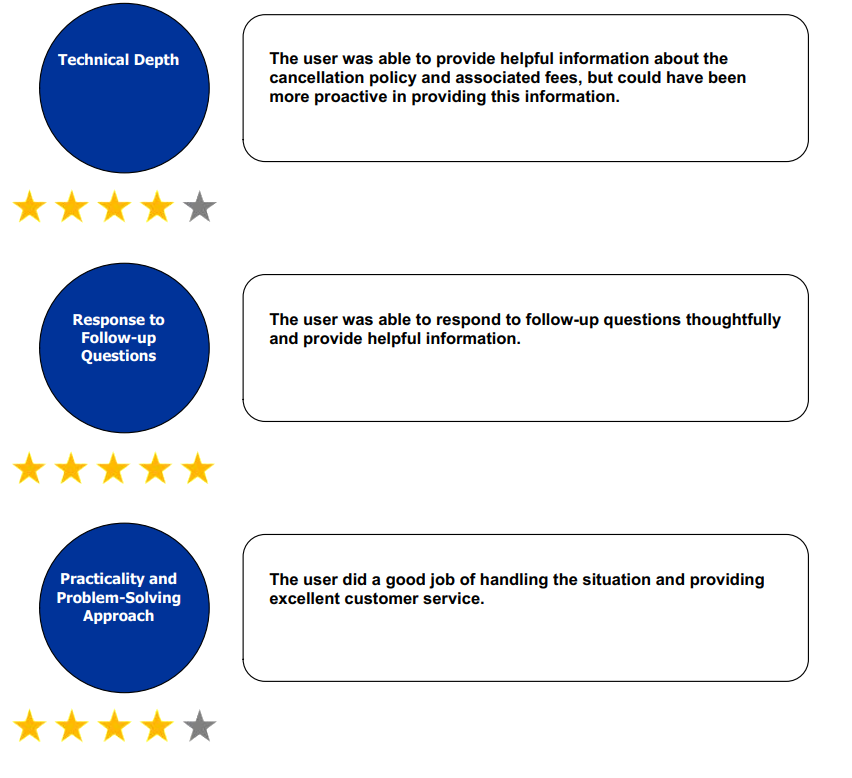
Moreover, Generative AI can adapt and learn over time. This means it can keep up with the rapid pace of change in the job market, and provide accurate predictions about future skill needs. This is a significant advantage over traditional methods, which can quickly become outdated.
The Power of Interactive Assessments in Skills Prediction
Interactive assessments are a powerful tool in the arsenal of Generative AI. They involve real-time, dynamic tasks that require the test-taker to interact with the assessment platform. This provides a rich source of data for the AI to analyze and learn from.
Interactive assessments can capture a wide range of skills, from technical abilities to soft skills like problem-solving and communication. They can also adapt to the test-taker’s responses, providing a personalized assessment experience. This can lead to more accurate and meaningful skills predictions.
Here are some key benefits of interactive assessments:

- They provide a more engaging and immersive experience for the test-taker.
- They can capture a wider range of skills and abilities.
- They allow for real-time feedback and adaptation.
- They generate rich data for AI analysis and learning.
- They can be used for both pre-hire assessments and ongoing employee development.
Interactive assessments offer a dynamic approach to evaluating employee skills by presenting specific problem statements or case studies. Employees are required to analyze various aspects of the case study and respond to specific questions or solve the associated problem.
During the process, candidates interact with an AI bot, providing their opinions on the case study. Based on their responses, the AI bot generates the next set of questions, adhering to predefined evaluation criteria.
This interaction is designed to be strictly aligned with the assessment’s evaluation and rating criteria. The AI bot generates a unique rating and skill prediction for each employee based on their responses, ensuring an unbiased and accurate assessment.
For organizations looking to evaluate employee skills, leadership qualities, or competencies across different domains or departments, a generative AI-driven, case study-oriented assessment approach is highly effective. This method offers a dynamic and unbiased way to accurately evaluate employee skills, providing valuable insights for talent development and management.
Case Studies: Generative AI in Action
Several companies have successfully implemented Generative AI-based assessments to predict employee skills. For instance, a tech giant used this technology to identify hidden talents within their workforce, leading to more effective team formations and project allocations.
Another case study involves a global retail company. They used Generative AI to predict future skill requirements in their rapidly changing market. This allowed them to proactively upskill their employees, ensuring they remained competitive.
Training Generative AI Models for Accurate Predictions
Training Generative AI models for accurate skills prediction requires a robust dataset. This dataset should encompass a wide range of skills, job roles, and performance metrics. The more diverse and comprehensive the data, the more accurate the predictions.
However, it’s not just about quantity. The quality of the training data is equally important. Up-to-date, relevant, and unbiased data ensures the AI model’s predictions are reliable and applicable to the current job market. This is crucial for the effective use of AI in talent management and workforce planning.

Ethical Considerations and Bias Mitigation
The use of AI in employee skills prediction brings up important ethical considerations. One of the main concerns is the potential for bias in AI predictions. If the training data is biased, the AI model’s predictions will also be biased.
To mitigate this, it’s crucial to ensure the training data is diverse and representative. Additionally, regular audits of the AI model’s predictions can help identify and correct any biases. This ensures the AI assessments are fair and equitable, contributing to a more inclusive workplace.
Integrating Generative AI Assessments into HR Systems
Integrating generative AI assessments into existing HR systems can streamline the talent management process. It allows for seamless data transfer, reducing manual work and potential errors.
The World Economic Forum predicts that by 2025, 50% of all employees will need reskilling due to the rapid pace of technological advancements.
Organizations must adopt AI into their business processes to align their workforce to align with technology advancements.
However, successful integration requires careful planning and collaboration between HR and IT teams. It’s important to ensure the AI system is compatible with existing HR technologies and can handle the data volume and complexity. With the right approach, AI can enhance HR operations and provide valuable insights for decision-making.
Embracing the Future of HR with Generative AI
Generative AI-based employee skills prediction is not just a trend, but a transformative tool for HR. It offers a more accurate, efficient, and personalized approach to talent management, enhancing the employee experience and driving business success.
As we move into the future, embracing AI in HR is no longer optional but essential. It’s time to leverage the power of AI to predict employee skills, make informed decisions, and stay ahead in the competitive business landscape.
Recent Posts
Ai group discussion – a new way to assess candidate skills, how a leading nbfc company redefined their employee training and assessment program [case study], top 10 employability skills for students: bridging the gap between education and the workforce.
- Simplification of Entrance Examination Management: A Case Study of Pune University

MR. Ashish Apte
Controller of examination (nmims university).
Very happy with Eklavvya – great customization, user-friendly, and cost-effective. Deployed quickly and the team is always positive and ready to help.

AVP, Business (Zerodha Broking Ltd)
We’ve been able to evaluate better, conduct evaluations more frequently. Hiring and Employee evaluation process is so much more streamlined due to Eklavvya.

Arjun Ghatule
Controller of examination (welingkar education group).
The onscreen evaluation process has definitely made things simpler and more efficient when it comes to generating results. Eklavvya is most definitely our go-to EdTech partner.

Prof Mahanwar
Director (mumbai university).
Examinations with an evaluation of more than 500,000 students were conducted by the Eklavvya platform with accuracy.

Prof Madhushree Sekher
Dean (school of vocational education tata institute of social sciences).
Our result processing, and examiner-checking process were scattered. Eklavvya helped us to streamline it using the online answer sheet checking process.

MR. T J Ravishankar
J n tata endowment for the higher education of indians.
We appreciate all efforts taken by the entire team of Eklavvya to successfully complete the examination without any glitch.

- Generative AI Assessment
- AI Proctoring
- Academic Assessment
- Corporate Assessment
- Remote Proctoring
- Onscreen Evaluation
- API Integration
- Question Bank
- Exam Analytics
- Learning Management System
- Moodle Proctoring
For Education
- Assessment for Education
- Online Exams for School
- Onscreen Marking System
- Question paper Generation
- Remote Exam Invigilation
- Exam Center Based Assessments
- University Examination Management
- Career Path Assessment
Exam Management
- Subjective Exam Management
- Question Bank Management
- Exam Scheduling Management
- Exam Result Management
- Candidate/ Student Data Management
For Corporate
- Assessment For Corporate
- Employee Skill Assessments
- Aptitude Test
- Coding Test Assessment
- Psychometric Tests
- About Eklavvya
- White Papers
- Term Of Uses
- Privacy Policy
- Refunds and Cancellation
Maharashtra ( India ) +91 95525 86428 [email protected]
Usa +1 (360) 742-0870 [email protected], uae +971 56 496 5525 +971 56 4396556, for technical query.
- Email: [email protected]
- Phone: +91 9552586428
- Product Help
- Candidate / Student
- Subjective Assessment
- Online Coding Test
- Online Exam Terms
- Copyright © Splashgain Technology Solutions Pvt Ltd 2023

COMMENTS
HR transformation case study. Hyatt's talent strategy transformation . A talent for caring: How Hyatt is activating its purpose and transforming culture to unlock growth for colleagues and the business ... With the Playbook underway, Hyatt's HR leaders realized that while they had done a lot to evolve their strategy and systems around ...
Three drivers of successful talent-management strategy. To support these outcomes, the results suggest three practices that most closely link with effective talent management: rapid allocation of talent, 4 We define rapid allocation of talent as the fast or very fast movement of talent among strategic projects as priorities arise and dissolve. HR's involvement in employee experience, and a ...
Building a Game-Changing Talent Strategy. The most effective people policies—like those at BlackRock—drive business strategy, address concerns across the entire organization, and add value. by ...
It'll help you attract and retain talent during the Great Resignation. Save; Share; Buy Copies; February 08, 2022; ... Strategy & Execution Case Study. Joel Peterson; Mark W. George; 11.95.
In the book Leading Organizations, 1 McKinsey senior partners Scott Keller and Mary Meaney address the ten most basic issues facing leaders: attracting and retaining talent, developing the talent you have, managing performance, creating leadership teams, making decisions, reorganizing to capture value quickly, reducing overhead costs for the long term, making culture a competitive advantage ...
Read Articles about Talent & Talent Management- HBS Working Knowledge: The latest business management research and ideas from HBS faculty. ... David Fubini questions whether strategy firms, who are considered experts at solving a variety of problems for clients, are struggling to apply their own management principles internally to address their ...
6 Talent acquisition strategy examples Case study: Unilever's successful talent acquisition strategy What is a talent acquisition strategy? A talent acquisition strategy framework helps organizations source, attract, and retain top talent who fit the organizational culture, can add a lot of value, and help the business meet its long-term ...
The CIPD's Resourcing and talent planning case studies are linked to the CIPD's Resourcing and talent planning report, and give examples of good resourcing and talent planning in practice. The report itself, in partnership with Omni RMS, examines resourcing and talent planning practices and the key challenges organisations are facing.
Summary. To supply the organization with the right mix of skills to solve business challenges in an agile way, HR leaders must decrease role centricity in talent processes. This case study illustrates Workday's approach to establishing a skills-first strategy for talent management.
RMS, examines resourcing and talent planning practices and the key challenges organisations are facing. It provides people professionals and their organisations with benchmarking data on important areas such as recruitment costs, workforce planning and retention. The following case studies supplement the main survey report, providing real-life ...
Given shifts in how value is created in the post-COVID-19 world, the talent base required may need to shift as well. Workforce planning, strategy, and change is the HR spending category that McKinsey survey respondents cite as most likely to increase over the next 12 months. Components of workforce planning and strategy include: • Critical roles.
Here C.H. Robinson explains how they created a global leadership strategy designed to identify, develop and retain high-potential employees; create a strong leadership bench; and develop the next generation of diverse leaders who empower teams to deliver exceptional results. Case Study - C.H. Robinson: Leveraging Assessment to Create a World ...
Talent development strategies help individuals to achieve their goals, while also improving the organization's performance. It can be used in a variety of ways: to improve employee engagement , productivity, and overall organizational performance; to develop or enhance skills within an employee's current role; to prepare an individual for a ...
Case Study. @DrJohnSullivan. Dr. John Sullivan is an internationally recognized expert on strategic talent management, human resources, and the future of work. He has authored over 20 books and hundreds of articles on human performance in the workplace.
Atos is an international information technology services company. They employ over 74,000 people in 48 countries. Impact Polska worked with Atos to improve their Global Talent Policy and align global and local talent management strategies in Poland.. In 2012 Atos designed a Global Talent Policy that local businesses were required to represent at a regional level in their offices.
Case study. Valuing your talent: Capgemini. Employing over 180,000 people across 40 countries, Capgemini relies on the expertise and skills of its workforce to deliver high organisational and financial performance. Faced with challenges such as siloed departments and reporting of often disconnected data, Capgemini sought to create a tool that ...
Refer to these case studies for examples of how other organizations have implemented an internal talent marketplace. Case Studies: Develop a Talent Management Framework Refer to these case studies for examples of talent management strategies.
Case Study: Aligning Talent Strategy with Core Values at Oxfam. Oxfam works with local people and organizations to best carry out its humanitarian assistance, as they are more knowledgeable and better placed to respond faster and better. These volunteers are women from Myanmar, now living in a refugee camp near Cox's Bazar, in Bangladesh.
Talent Acquisition at Starbucks. Starbucks' talent acquisition strategy underscores its commitment to excellence and inclusivity. This helps in setting a high standard in the industry. It leverages technology to access a diverse pool of candidates through innovative recruitment techniques. The company's forward-thinking approach has yielded ...
Case Studies: Create a Talent Acquisition Strategy. Author (s): Laura Ribadeneira , Christine Penhale , Alyssa Lampert. To unlock the full content, please fill out our simple form and receive instant access. Refer to these case studies for examples of talent acquisition (TA) strategies. These case studies will give you examples of:
Talent management strategies can reduce turnover by improving the employee experience and reduce one of your company's biggest expenses: hiring new talent. Build and manage global teams with G-P. In today's evolving business landscape, one thing is clear: Talent management is more important now than ever.
Khanna, Tarun, Shu Lin, and Nancy Hua Dai. "Talent@Tencent." Harvard Business School Case 722-413, March 2022.
HBR On Strategy curates the best case studies and conversations with the world's top business and management experts, to help you unlock new ways of doing business. New episodes every week.
Strategic talent management is the proactive process of aligning an organization's talent capabilities with its long-term business goals, ensuring that it has the right people in place for future success. ... 🌱 Check out our in-depth case studies of L&D at BCG and L&D at Spotify. Learn from the best how to build a professional development ...
The client organization, Guyana's principal law enforcement agency, lacked a robust, effective, and strategic succession plan to fill vacancies for senior leadership and management. The current qualitative case study was to ascertain the appropriate strategies that could be employed for this organization, and by extension public organizations and law enforcement agencies, to have a robust ...
Revolutionize your talent management strategy with cutting-edge Generative AI technology and interactive assessments. ... assessments offer a dynamic approach to evaluating employee skills by presenting specific problem statements or case studies. Employees are required to analyze various aspects of the case study and respond to specific ...